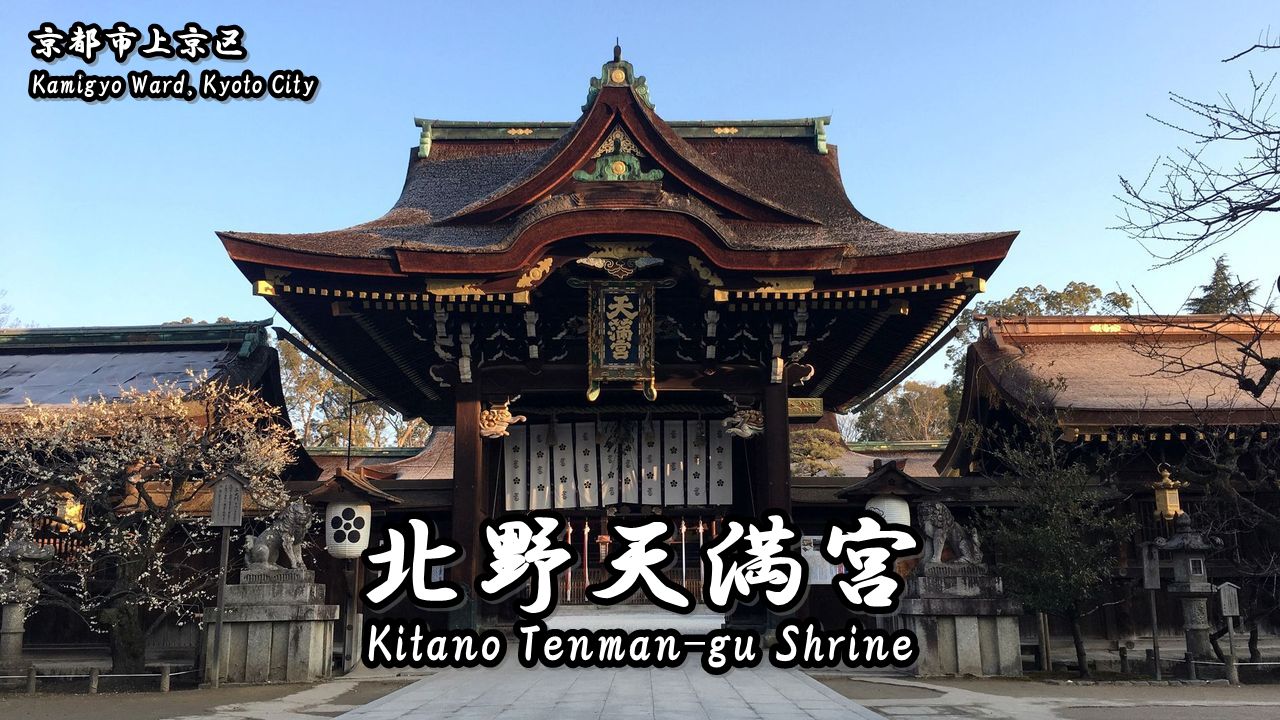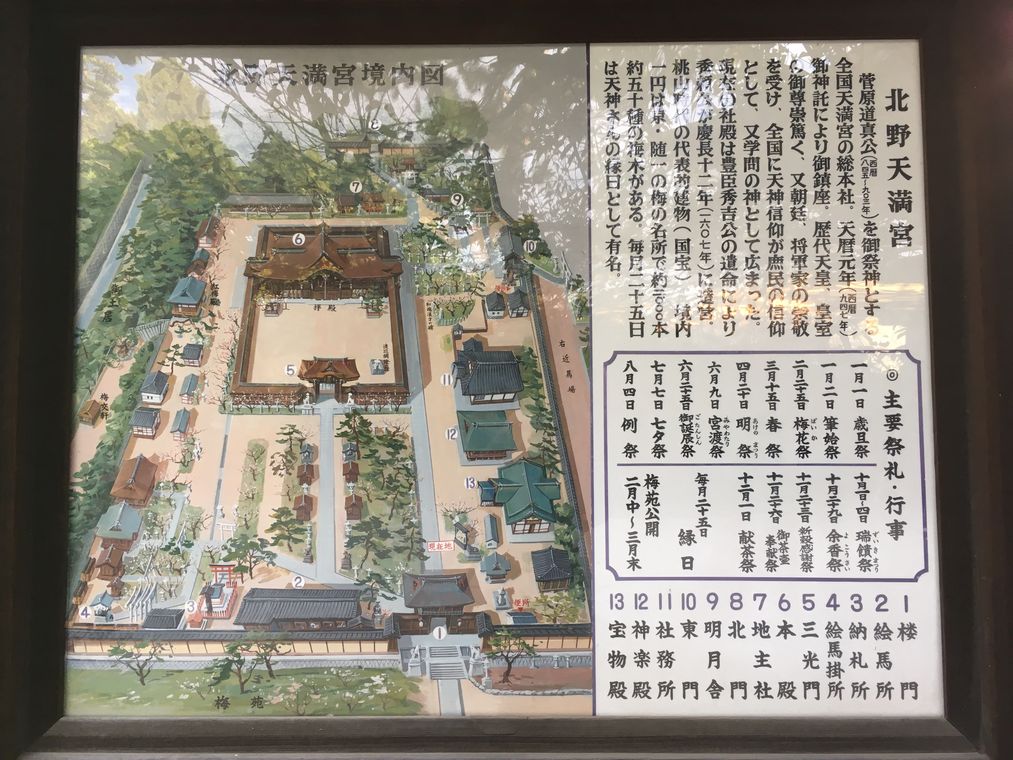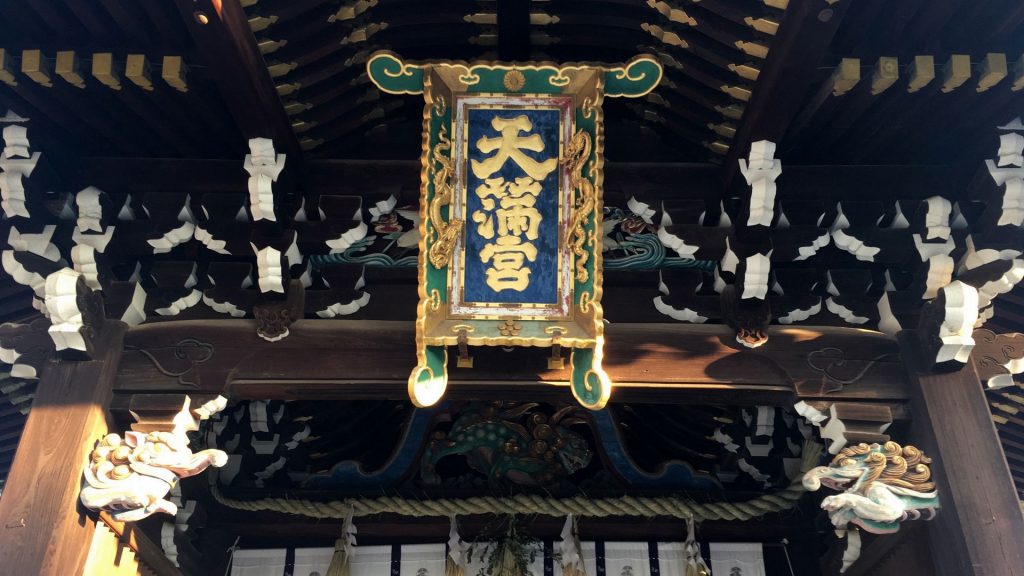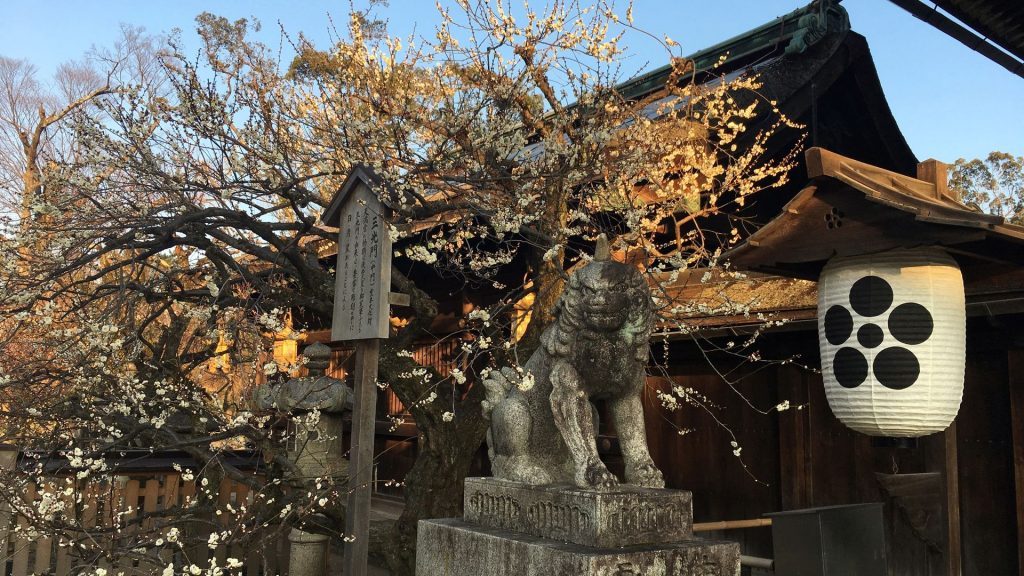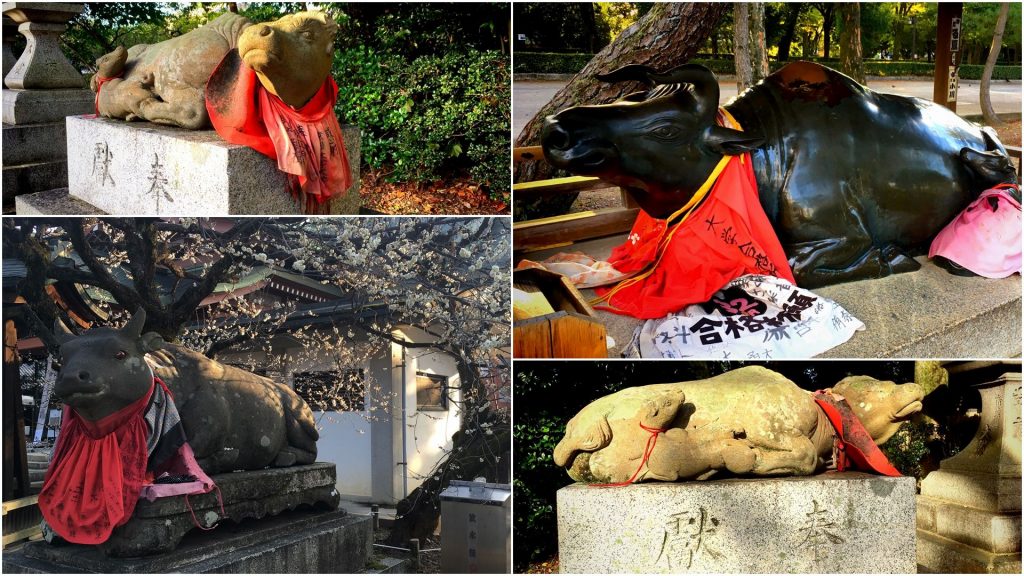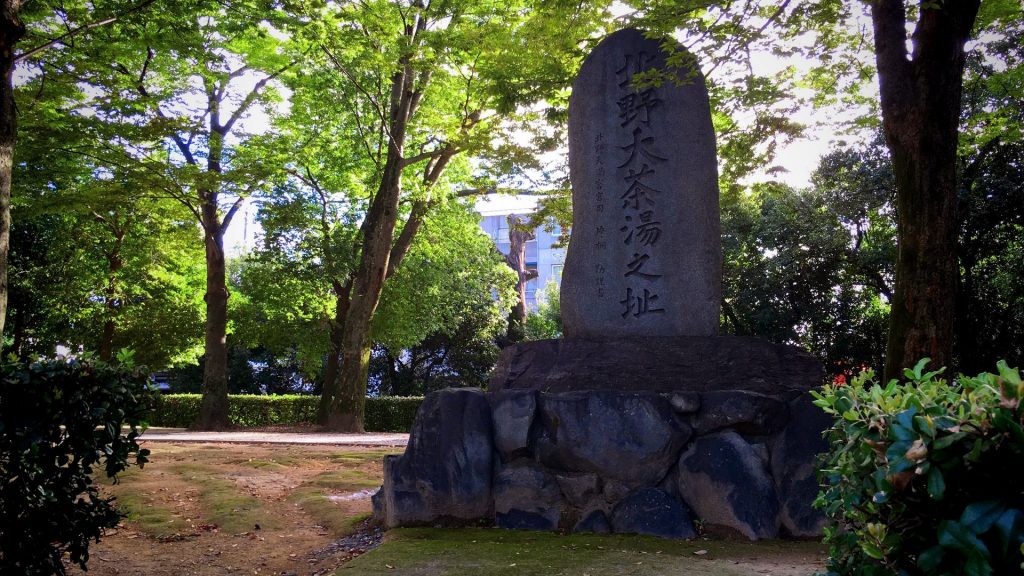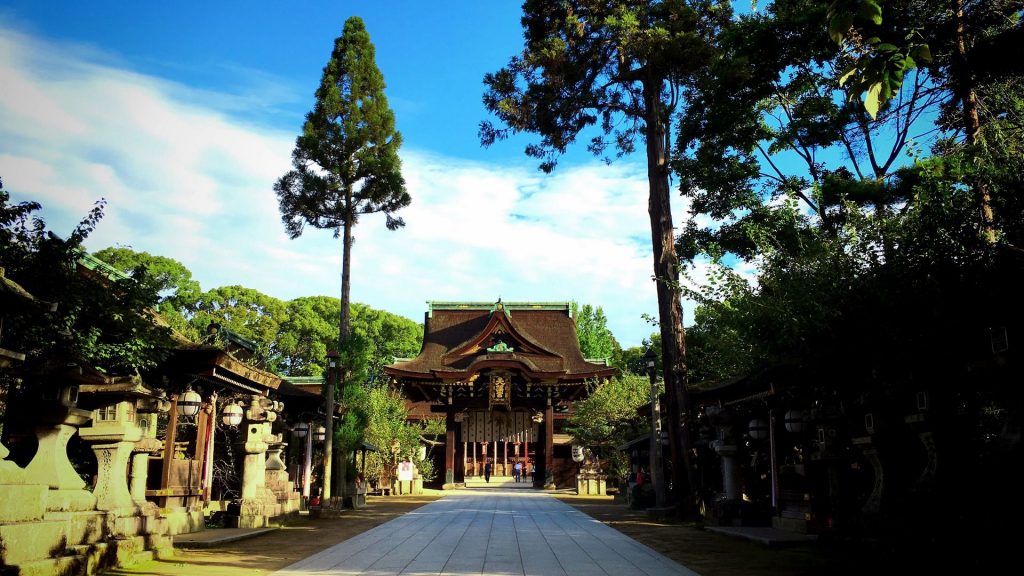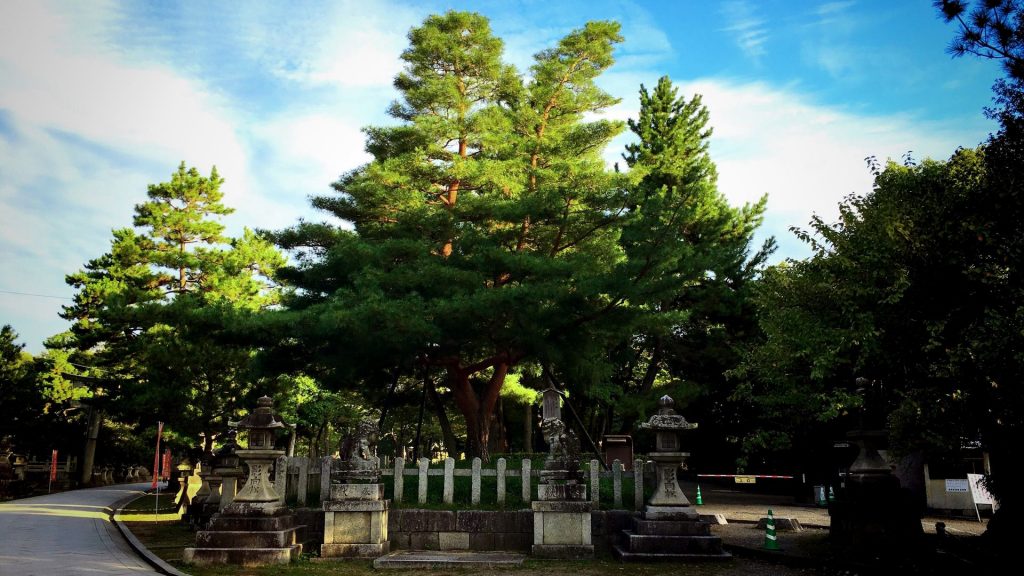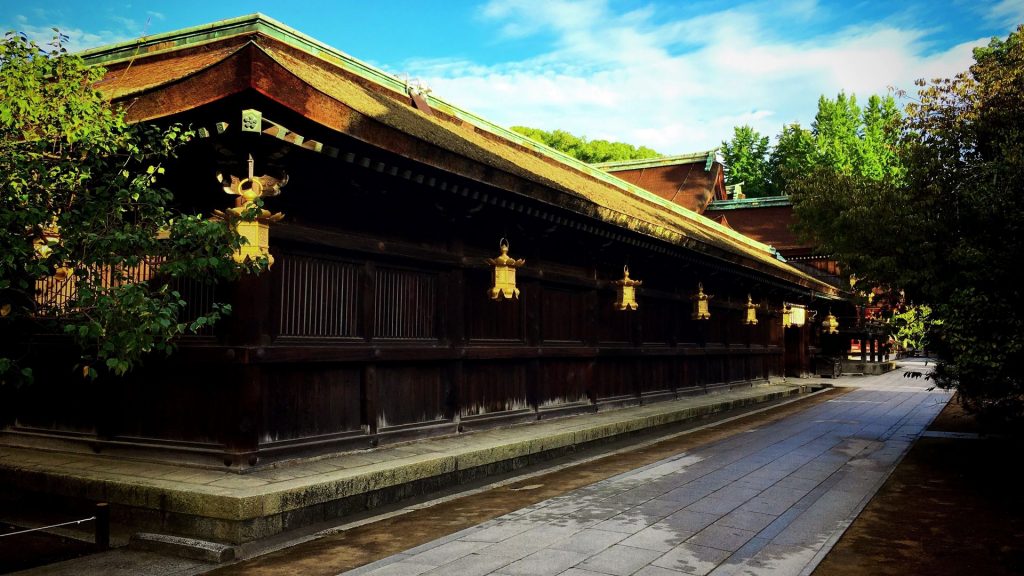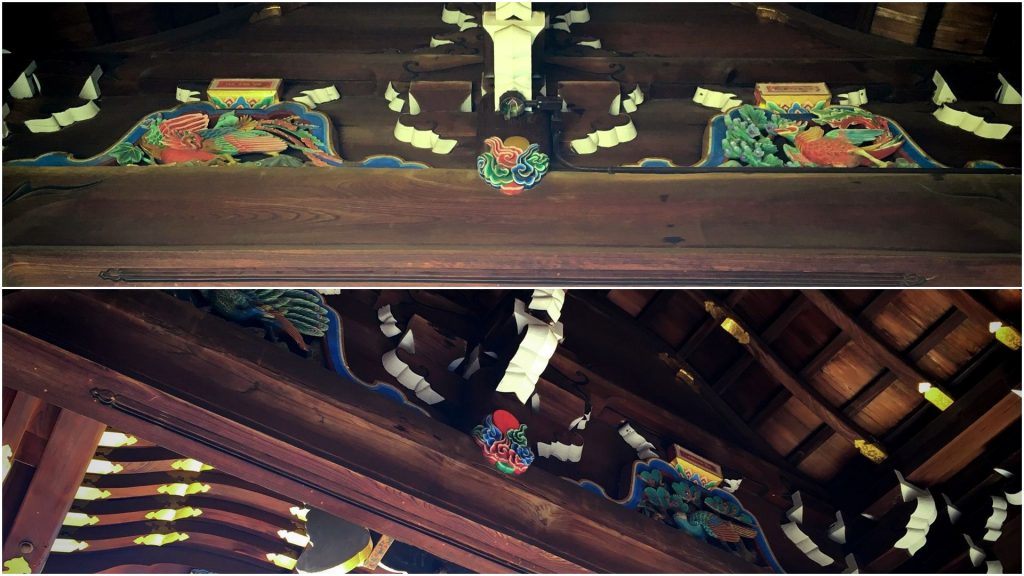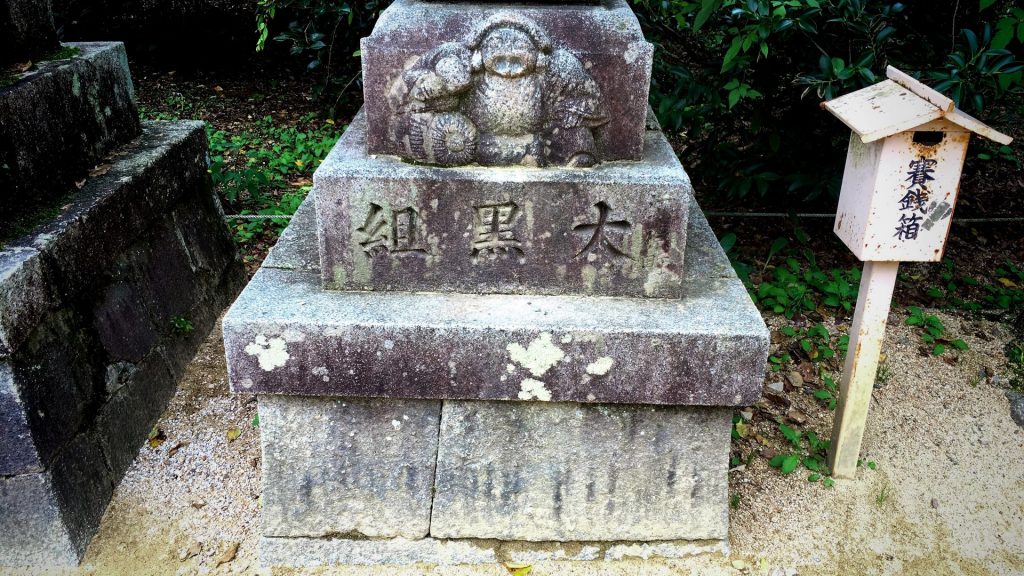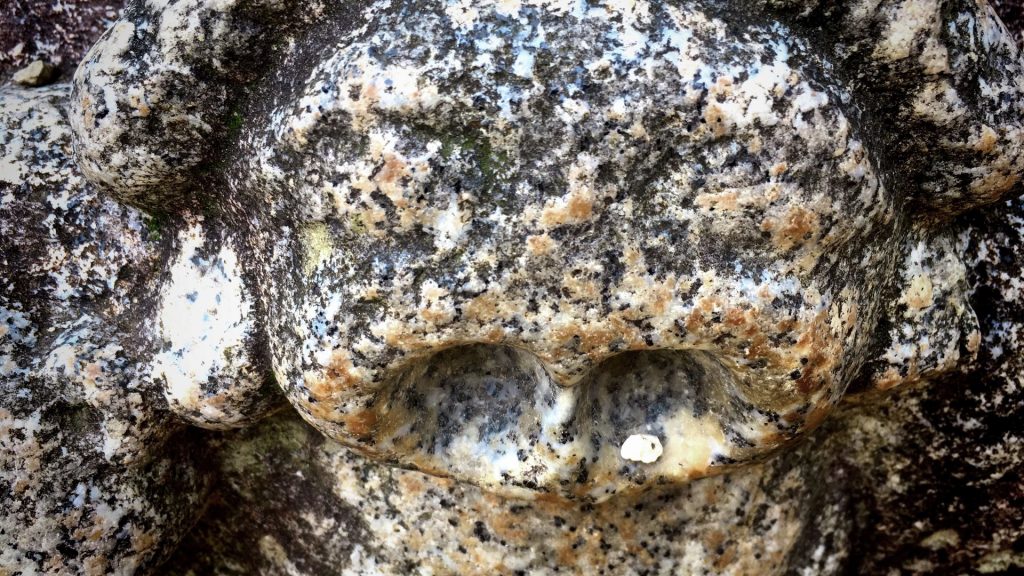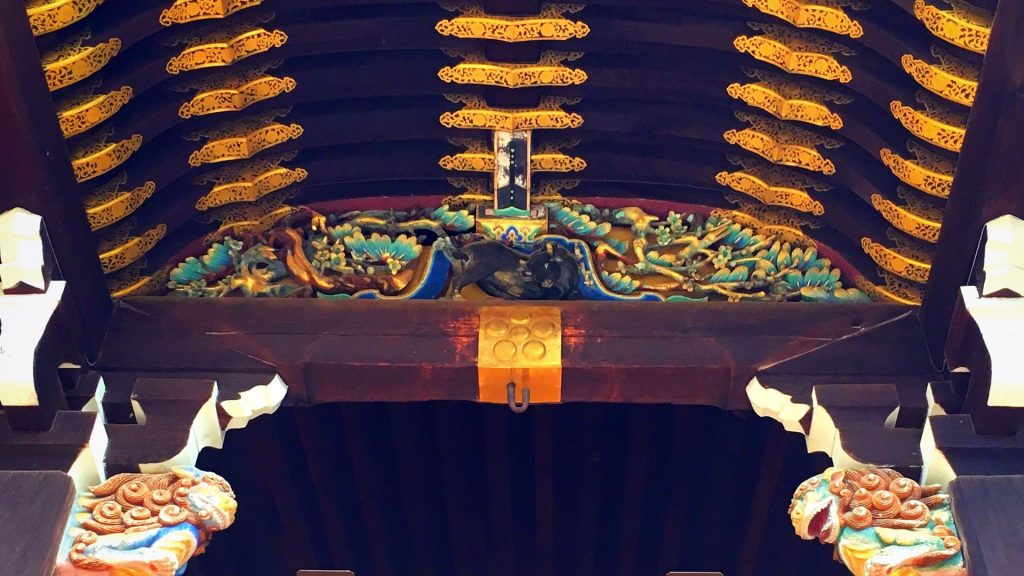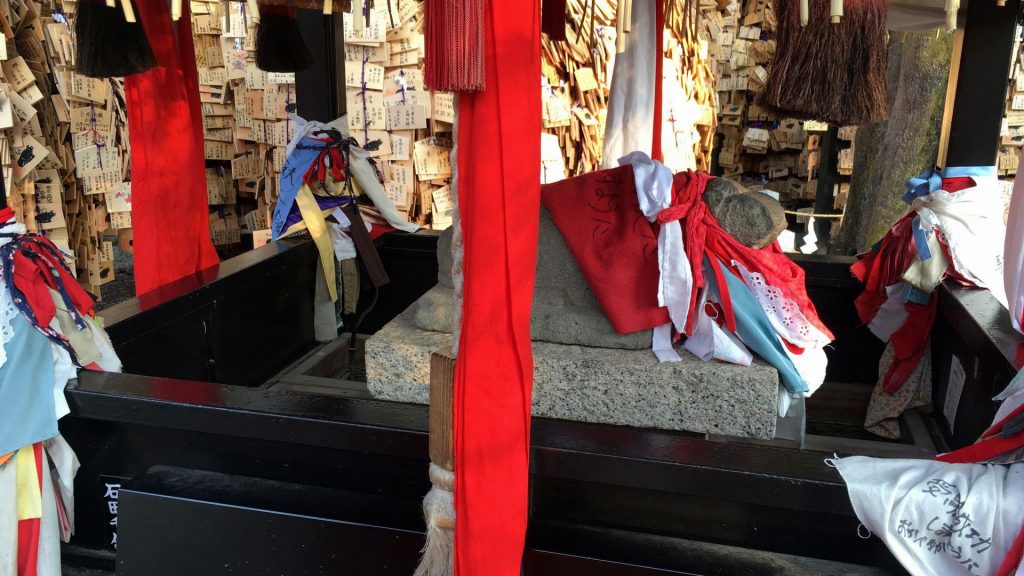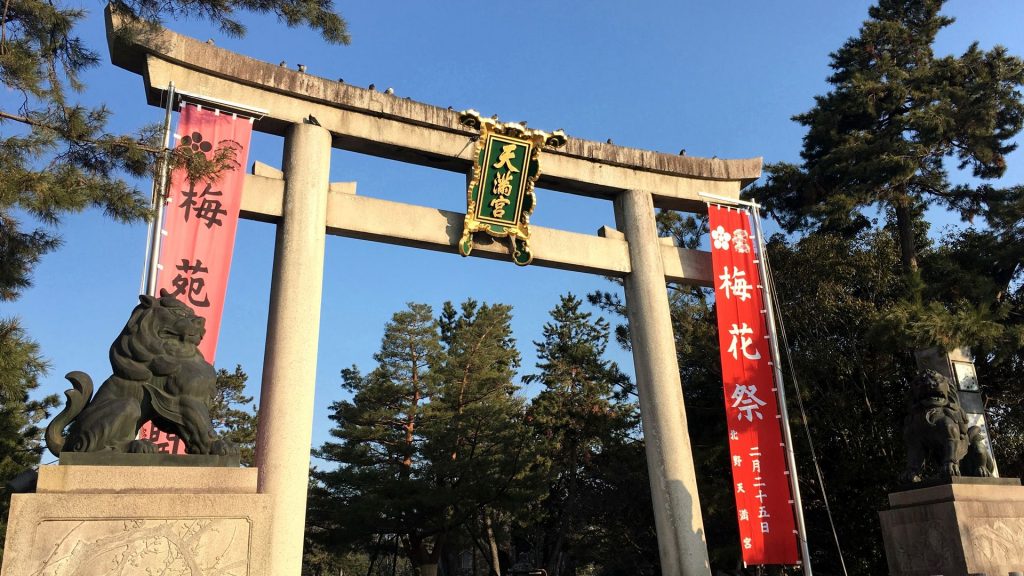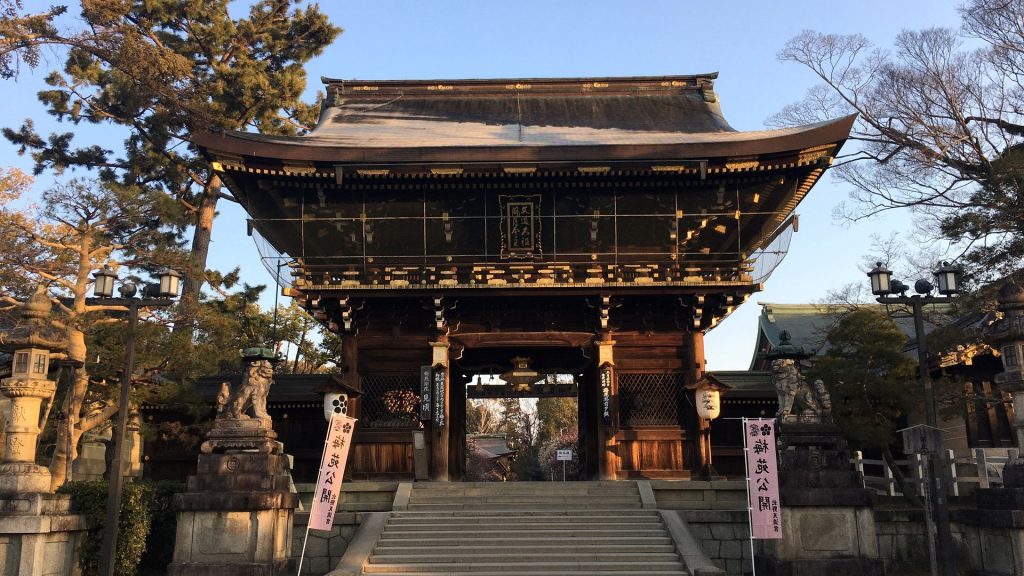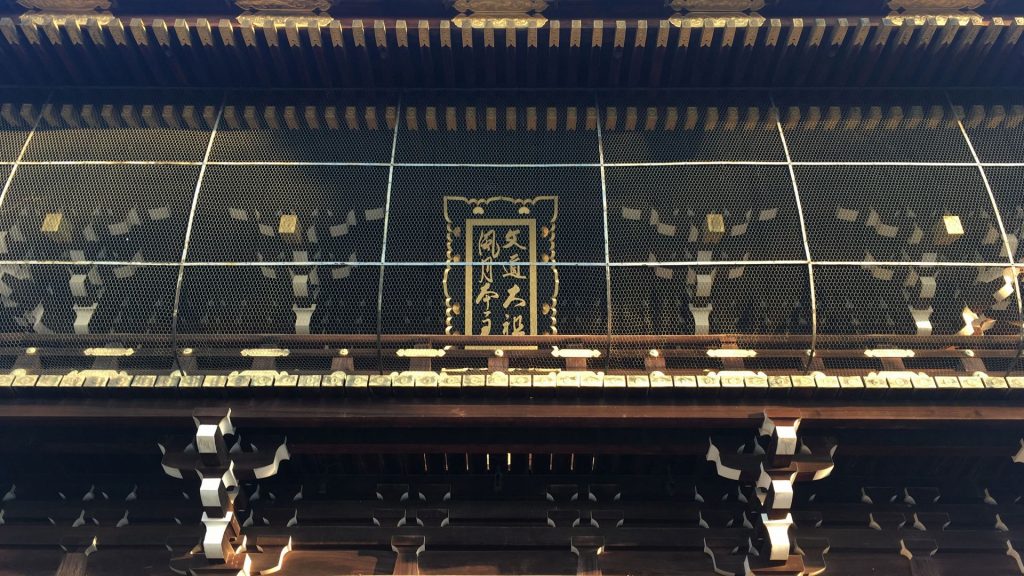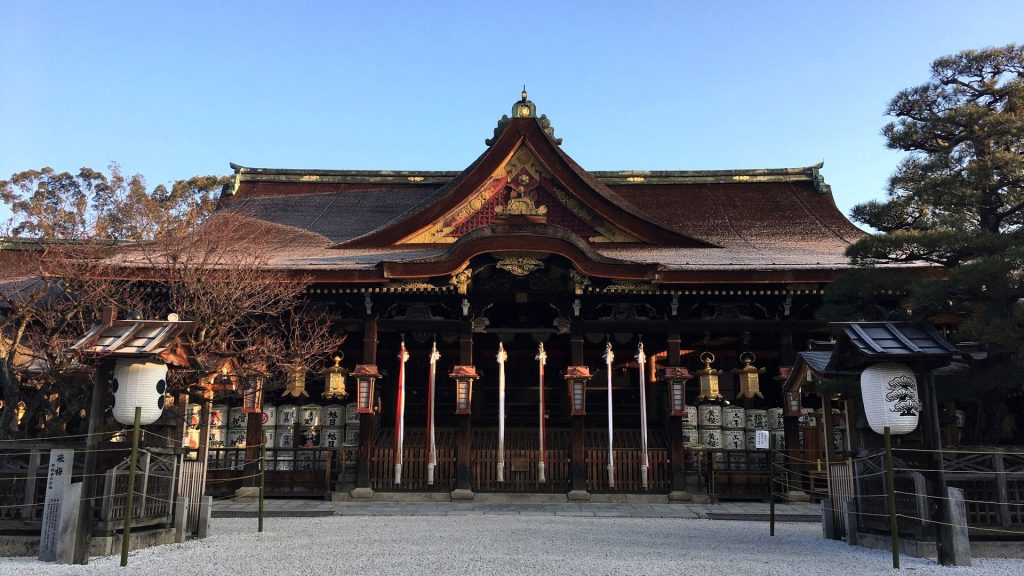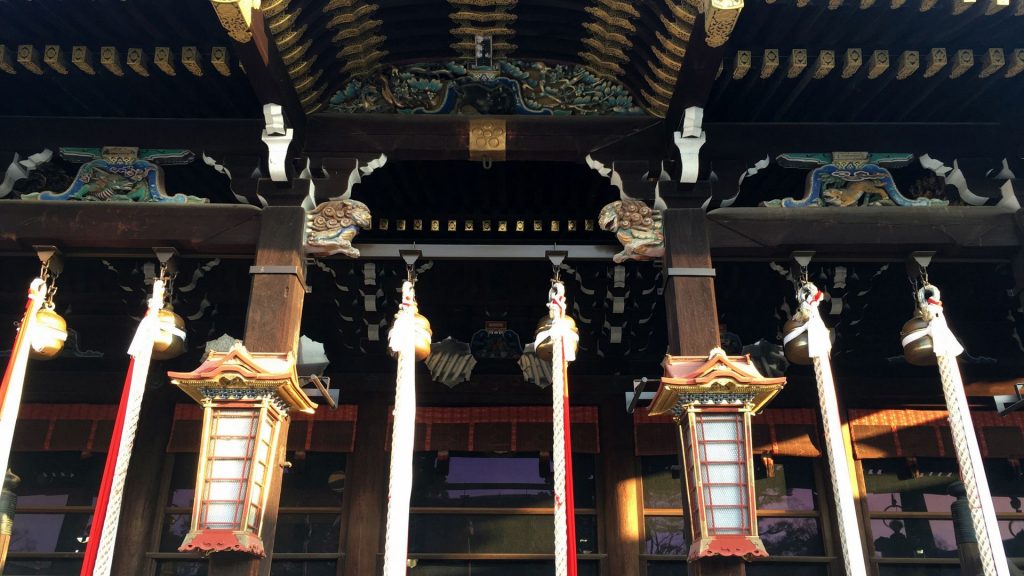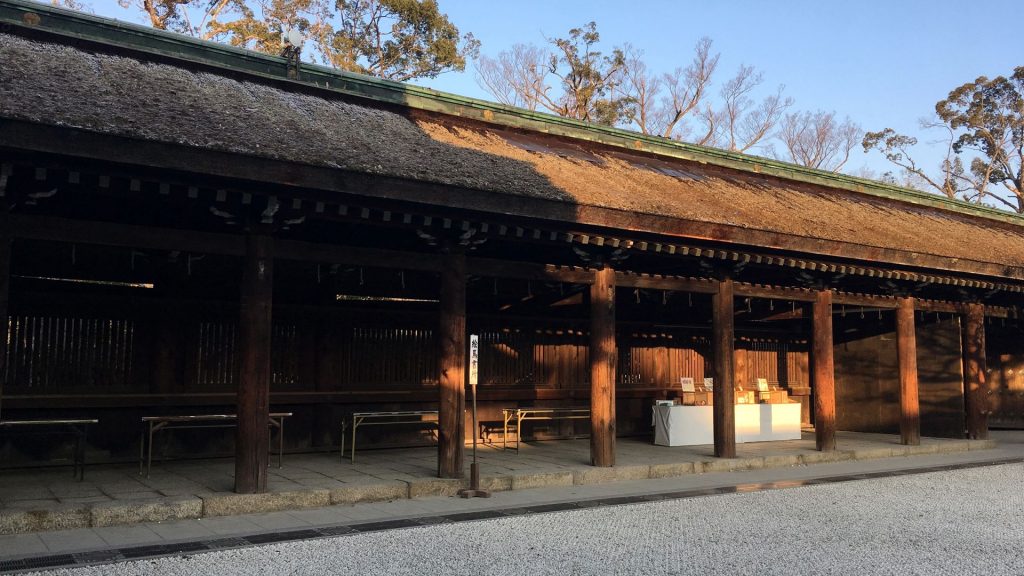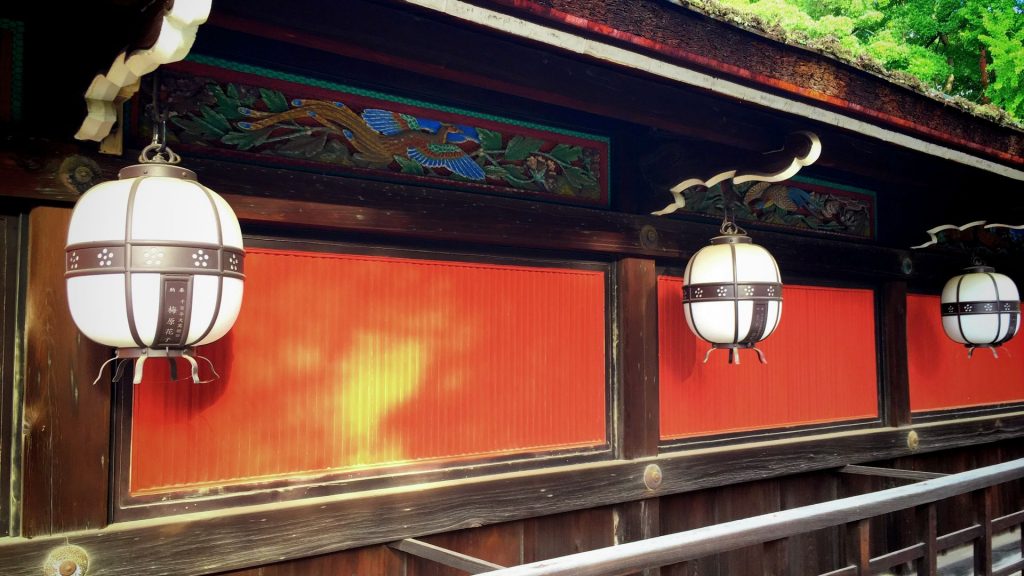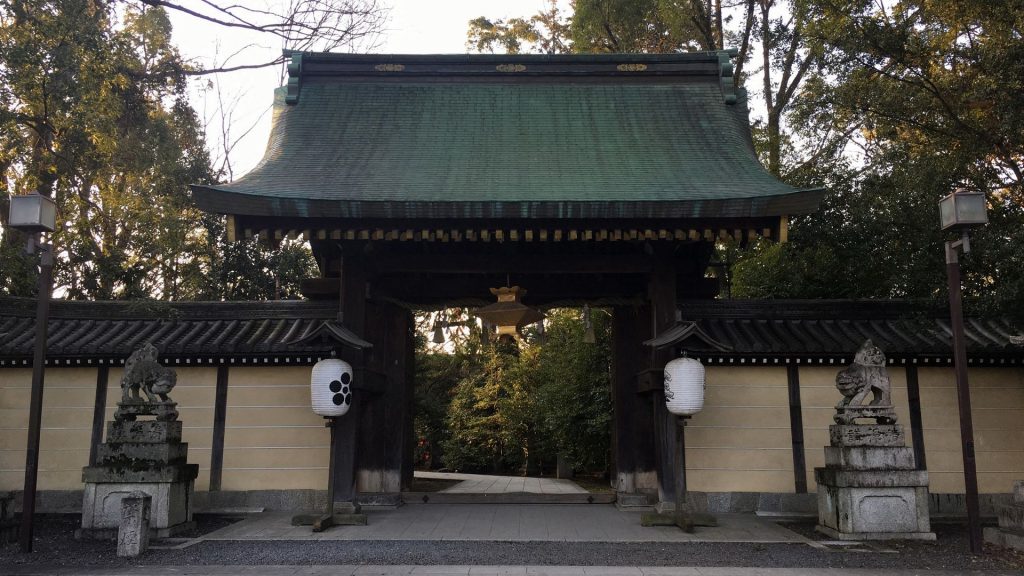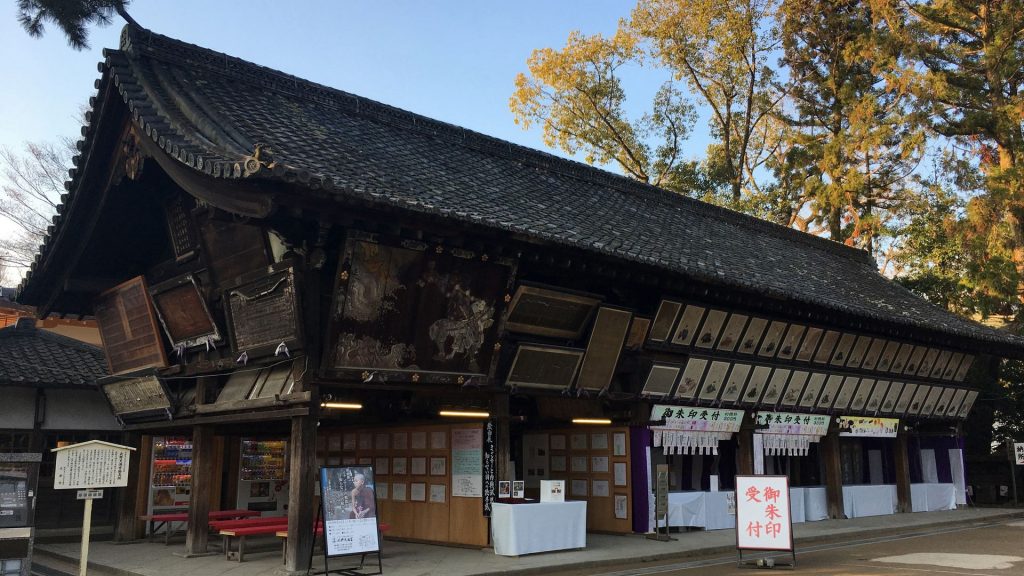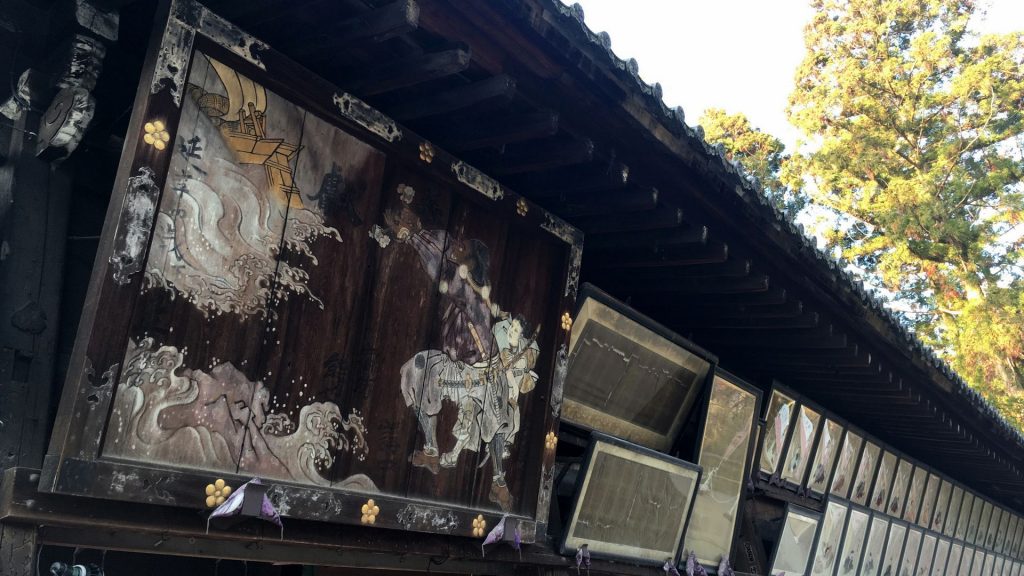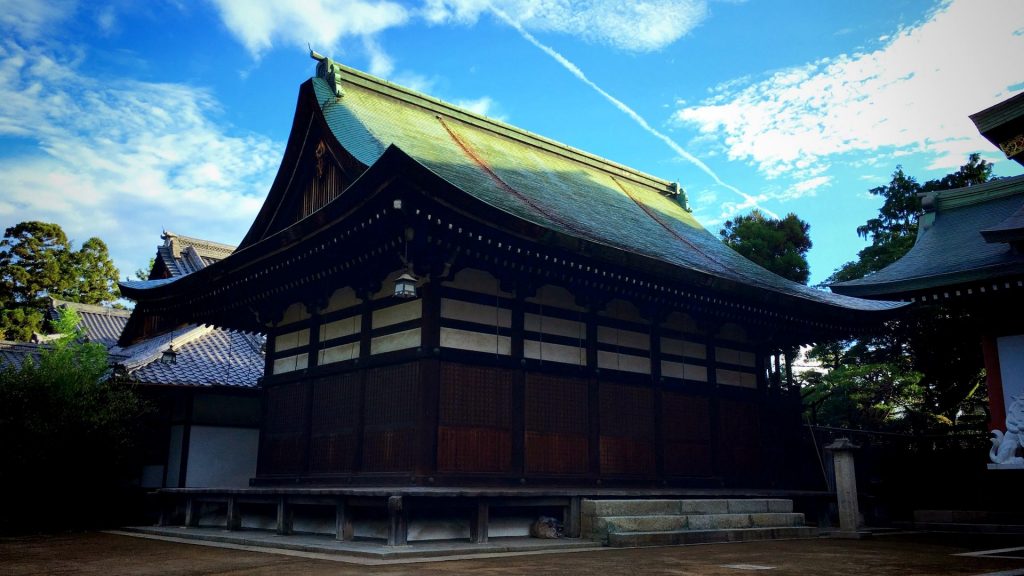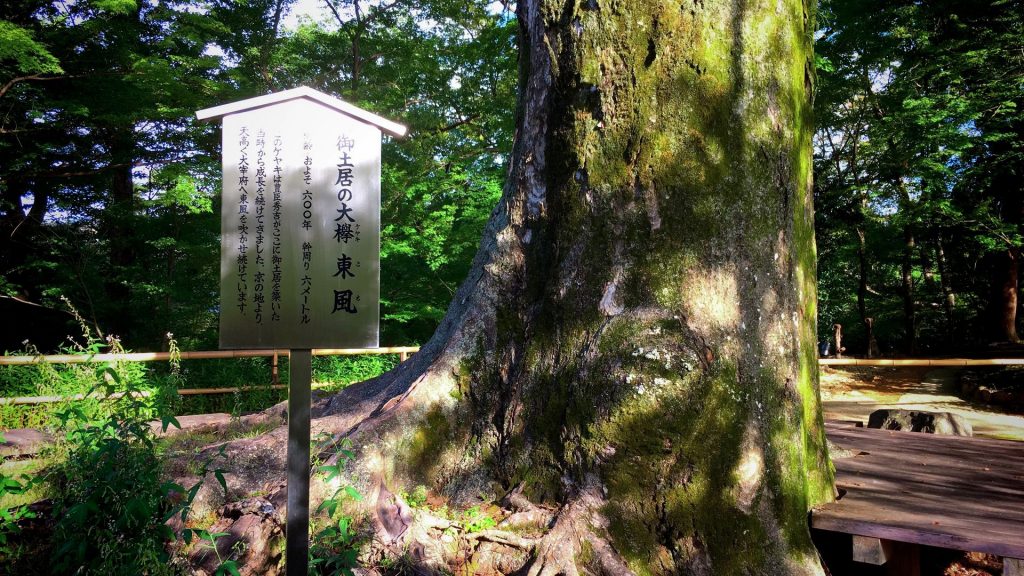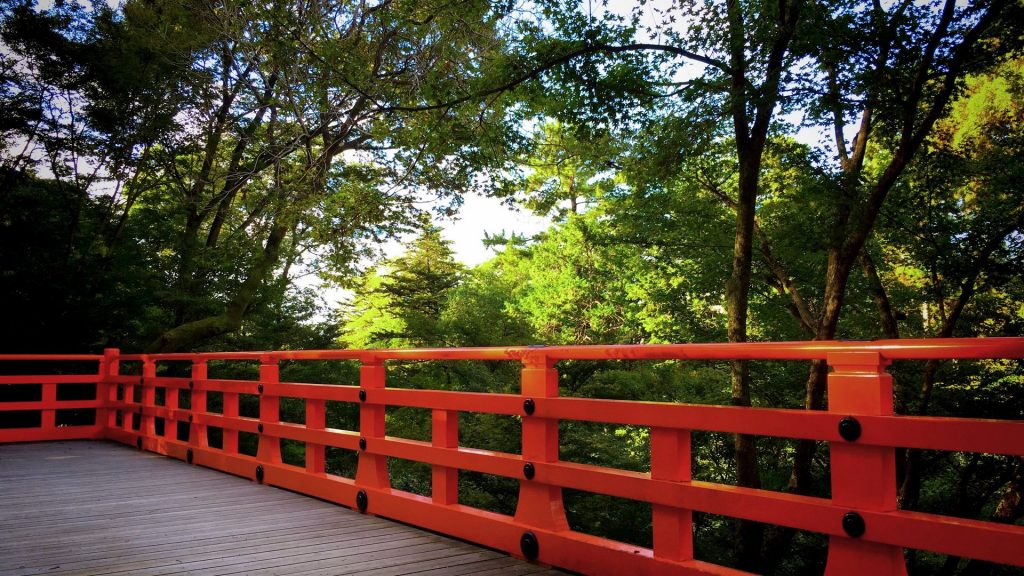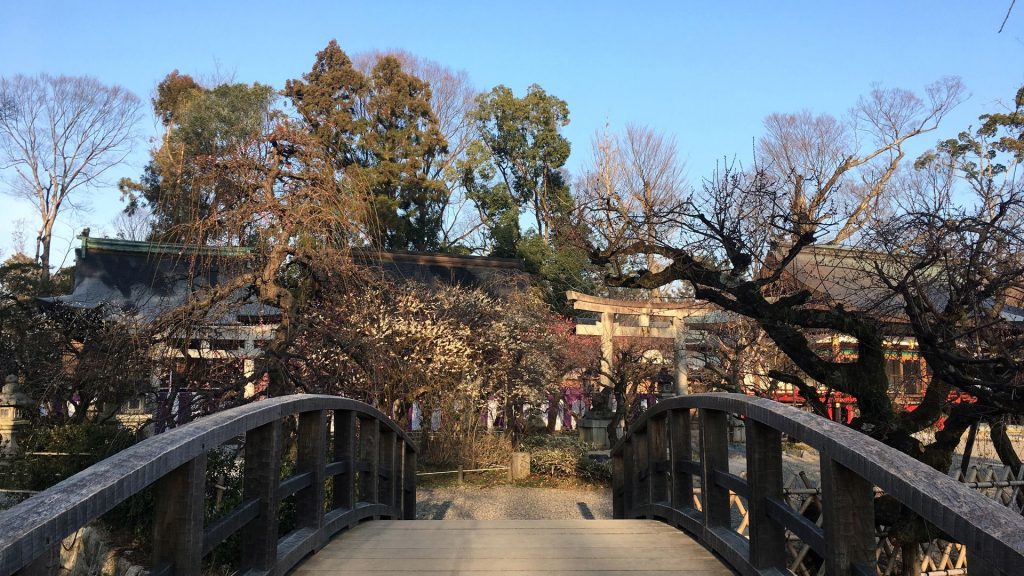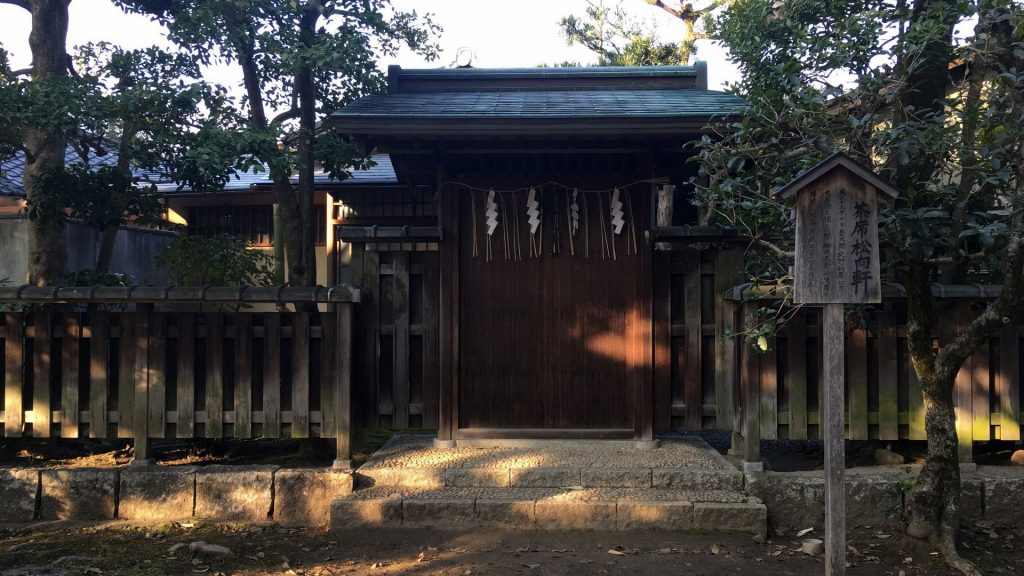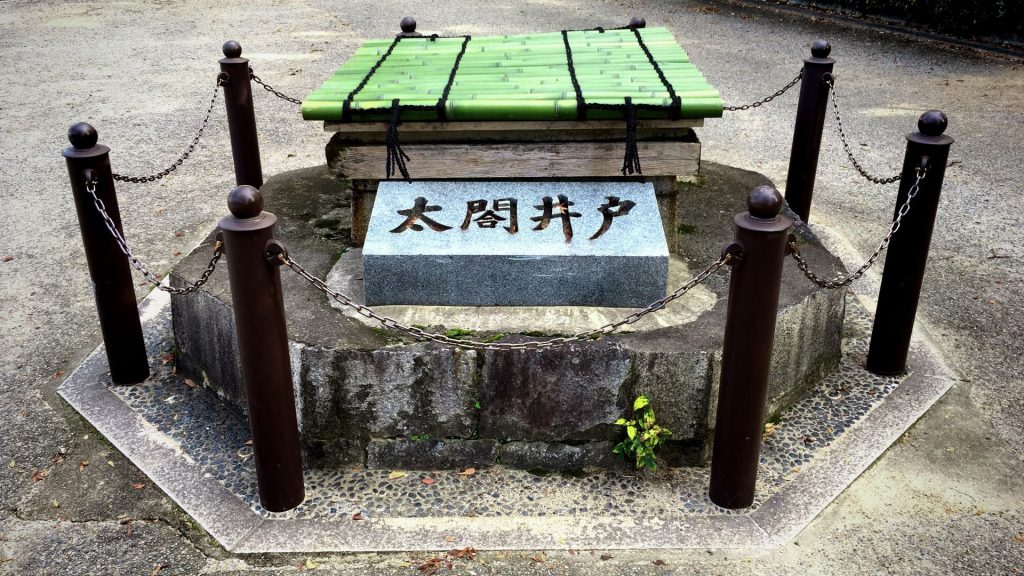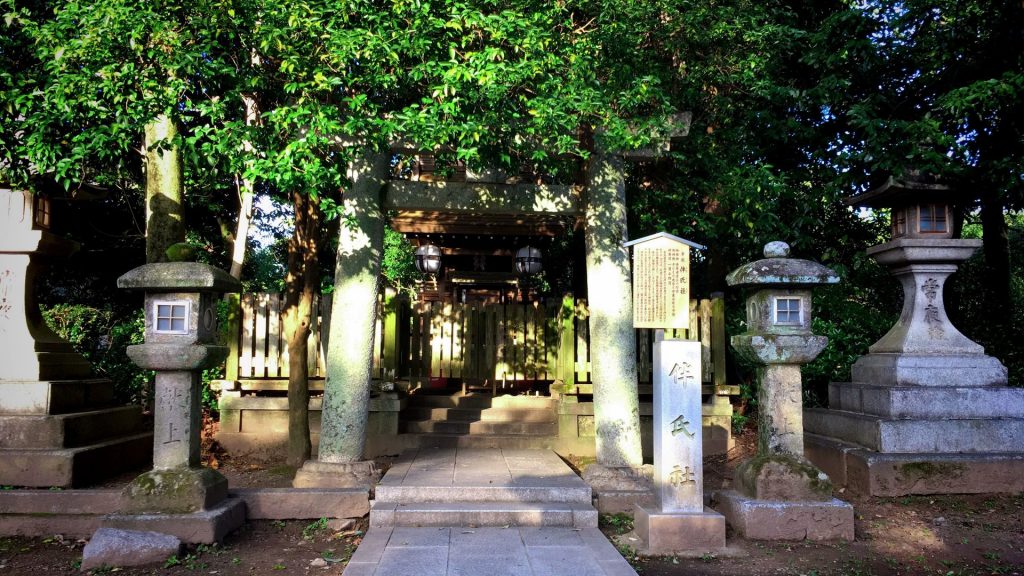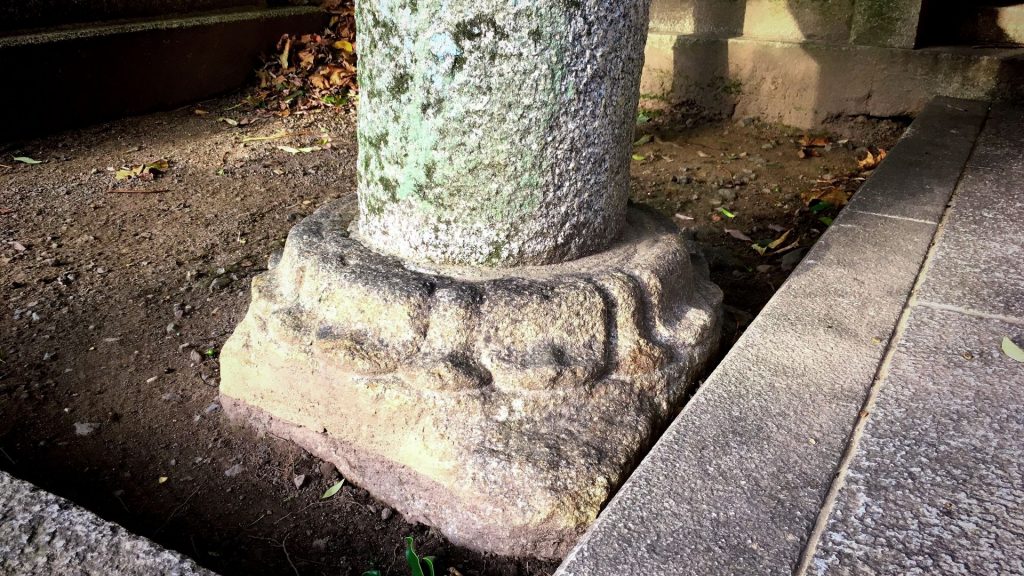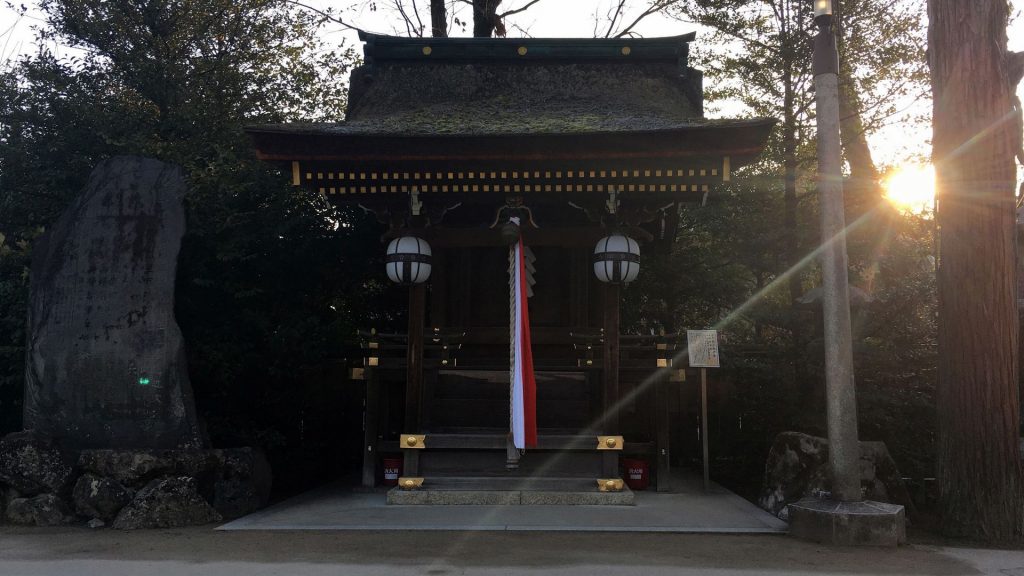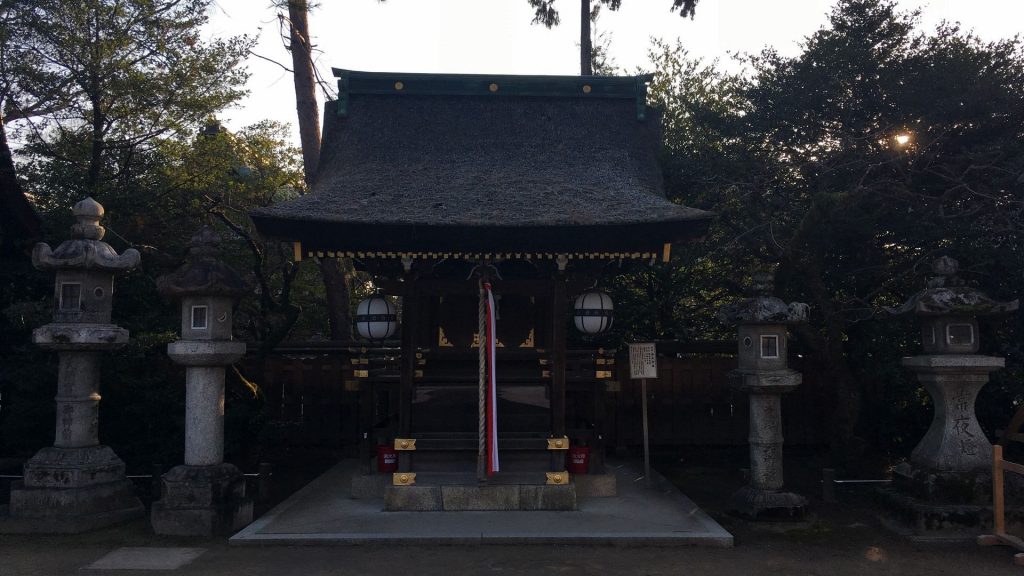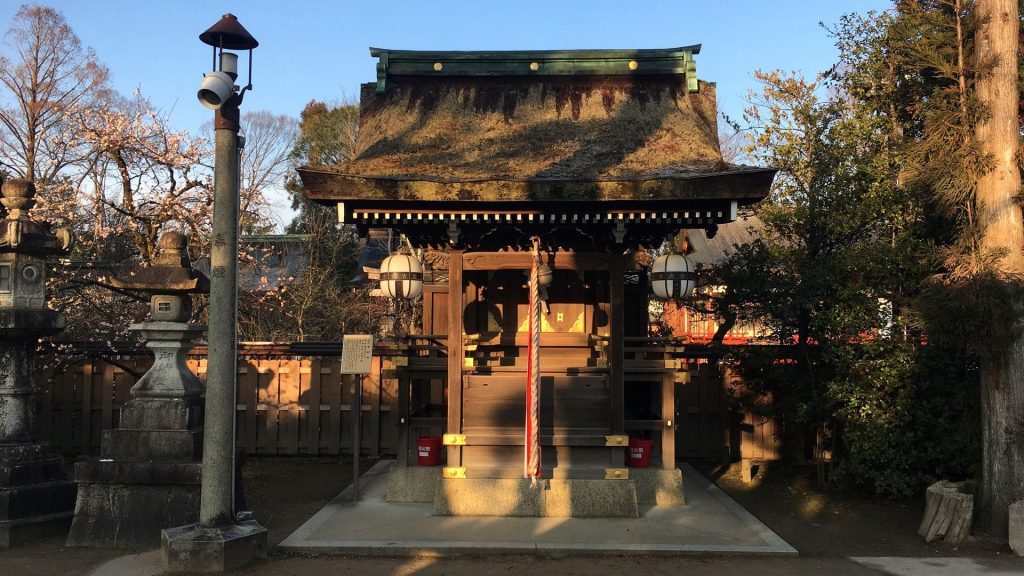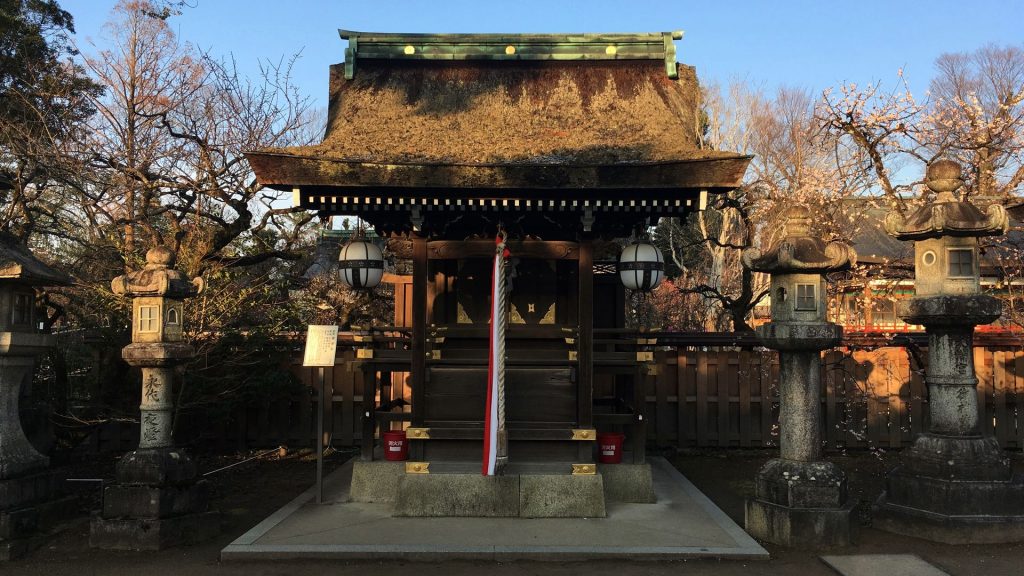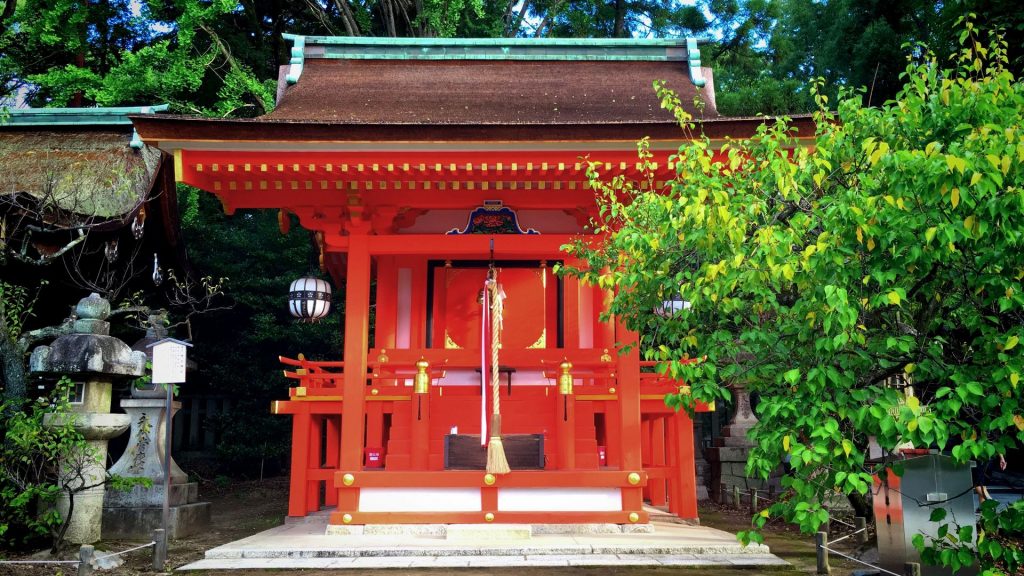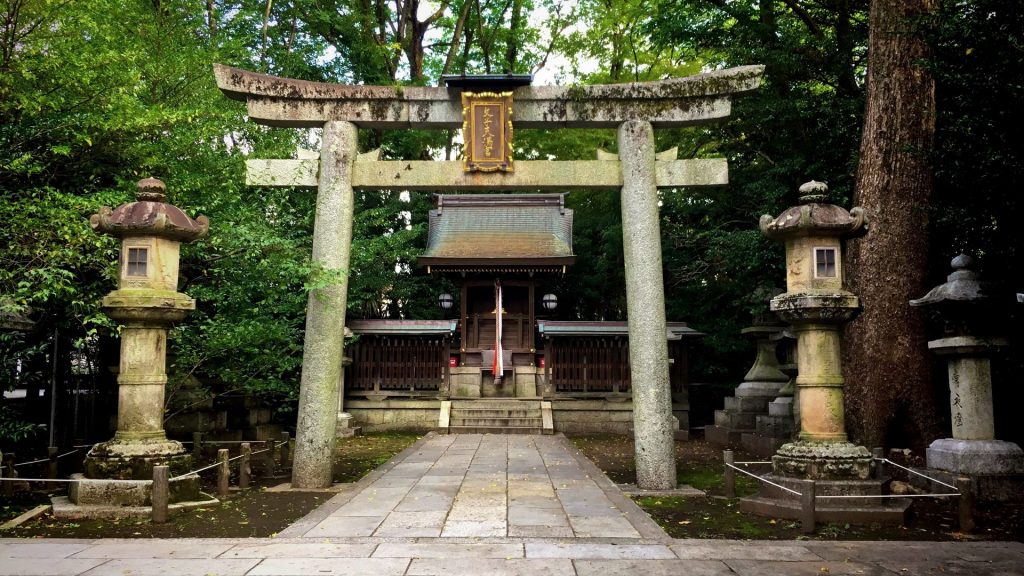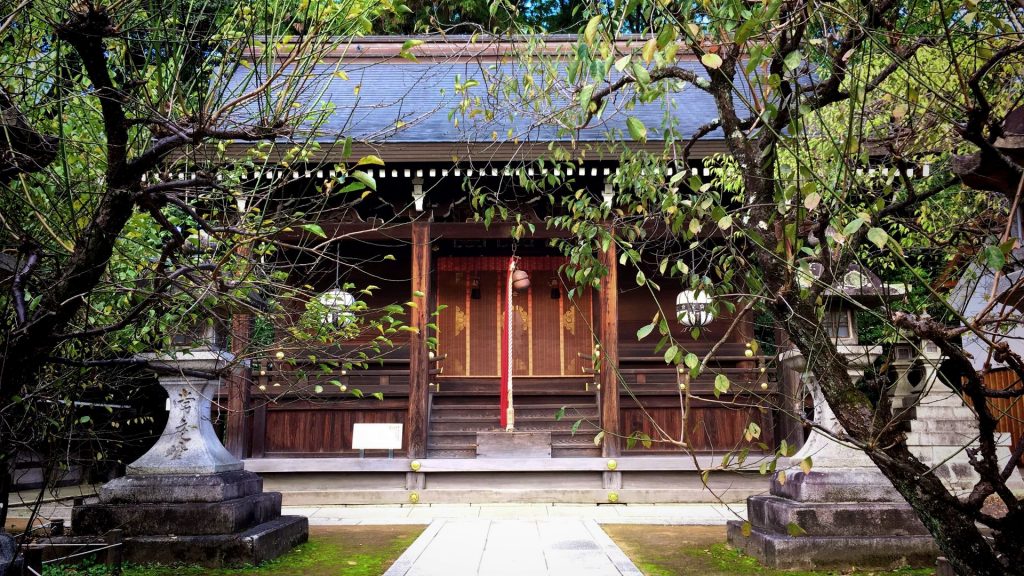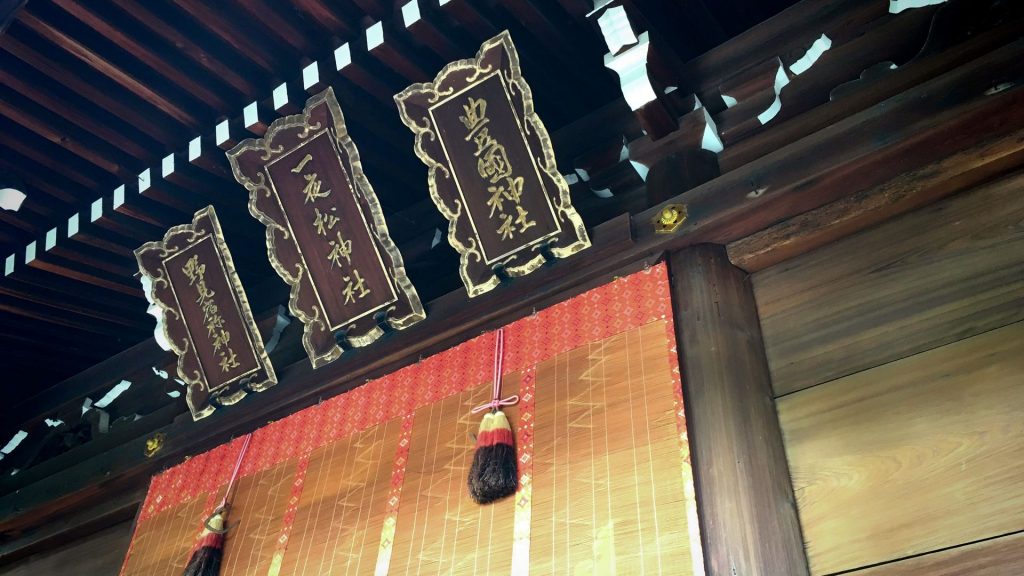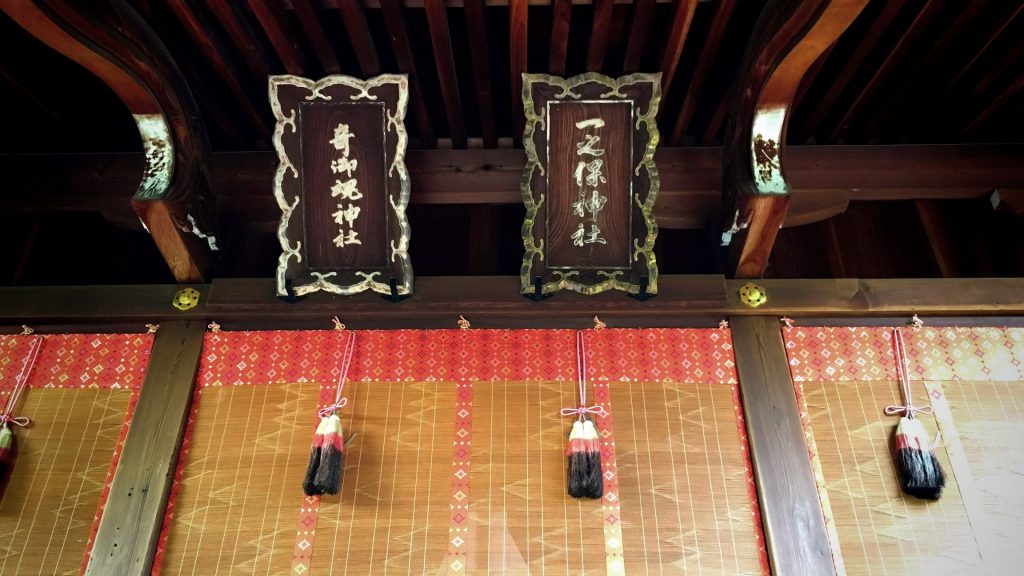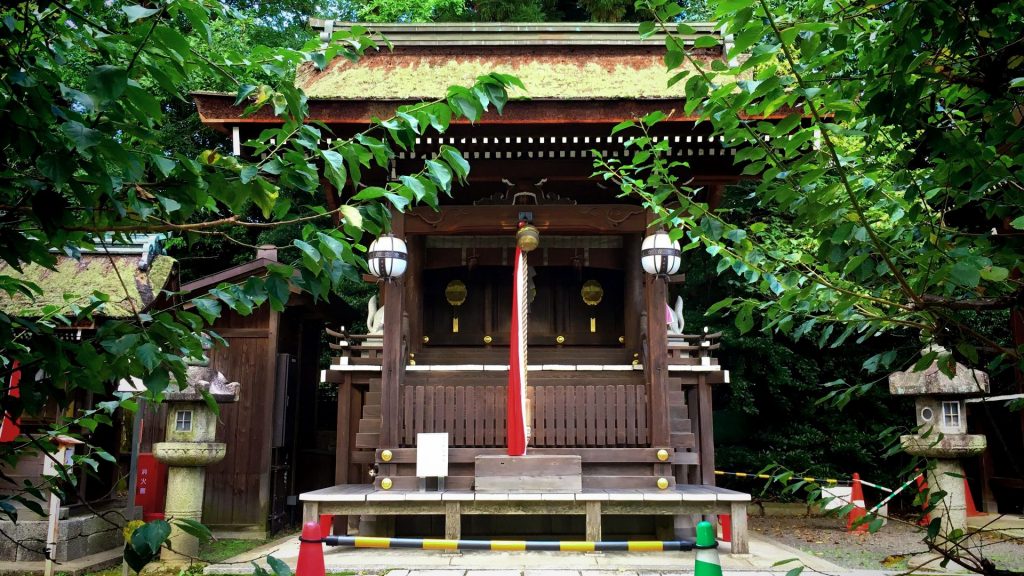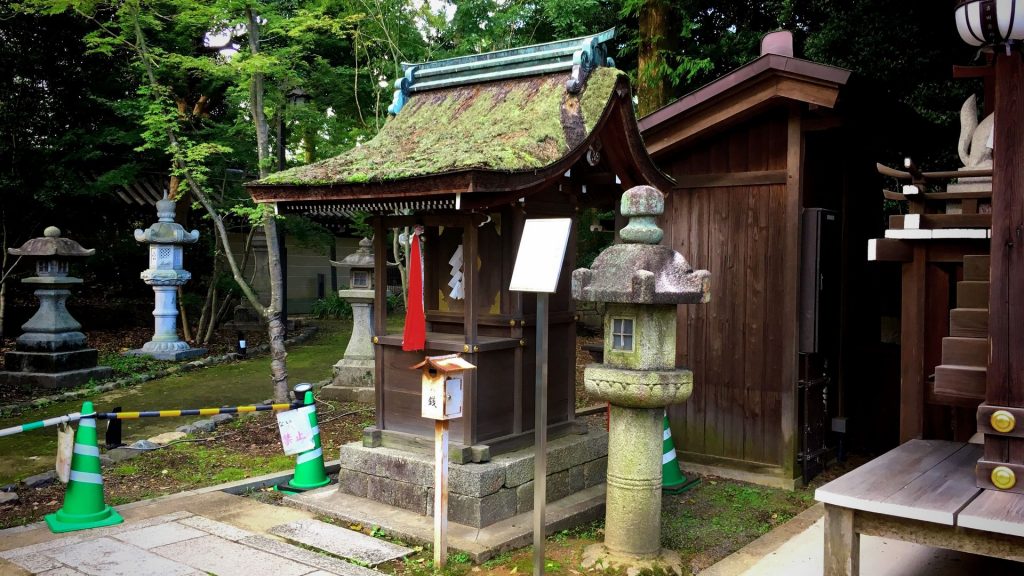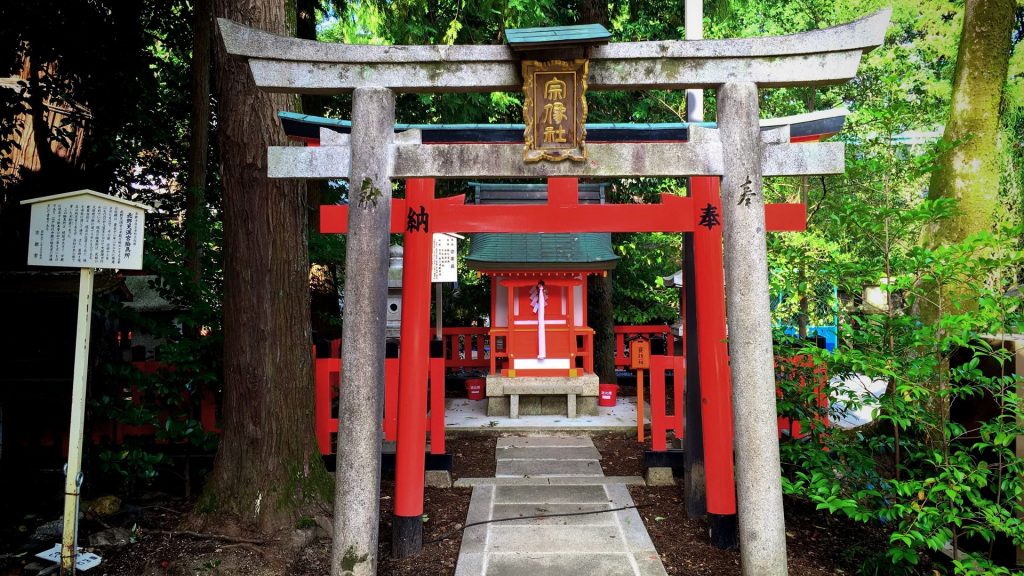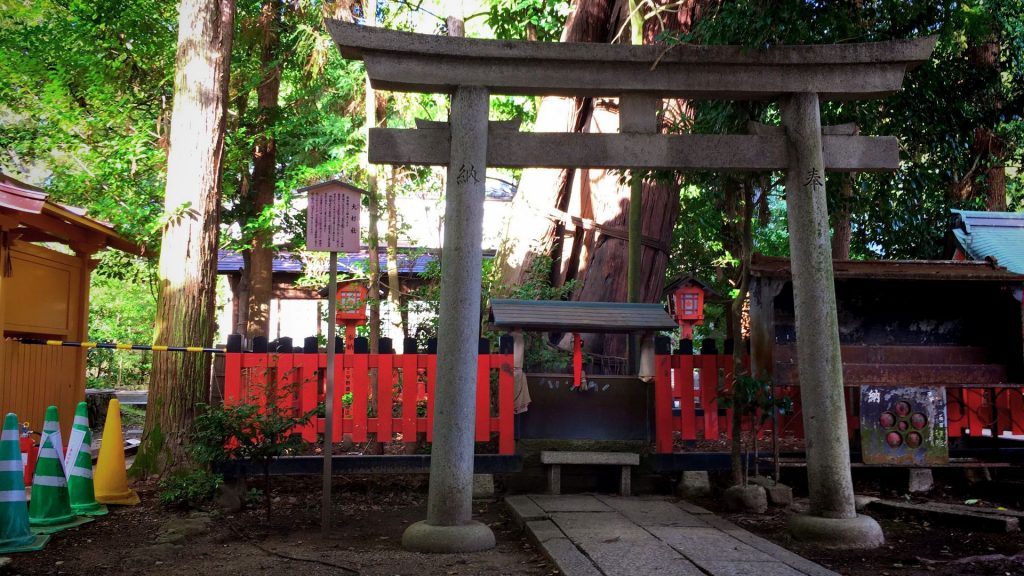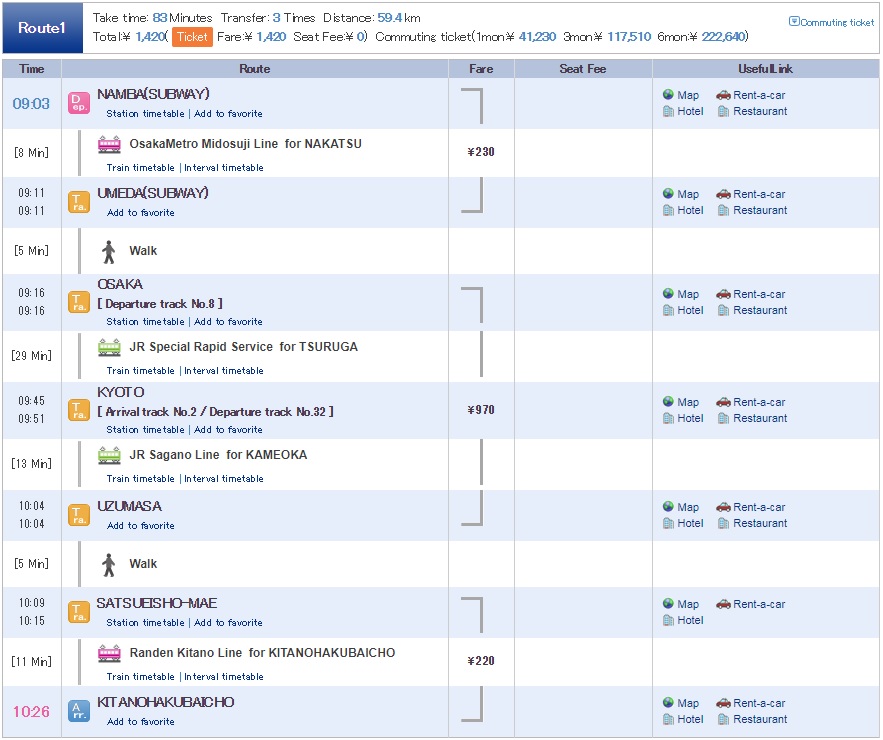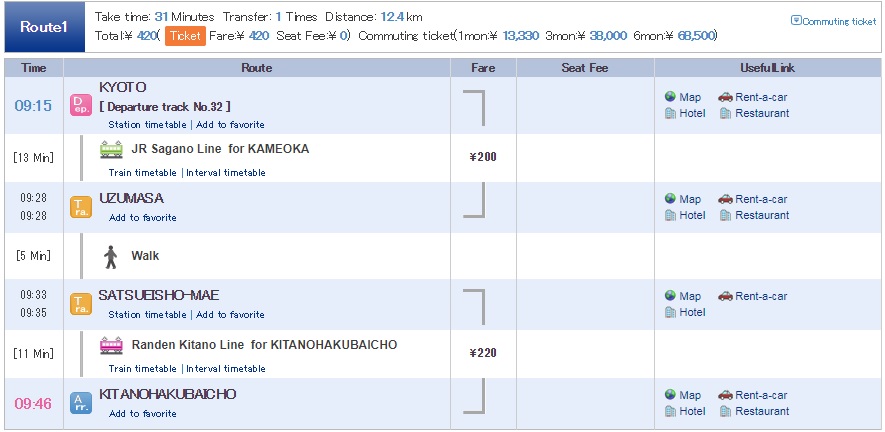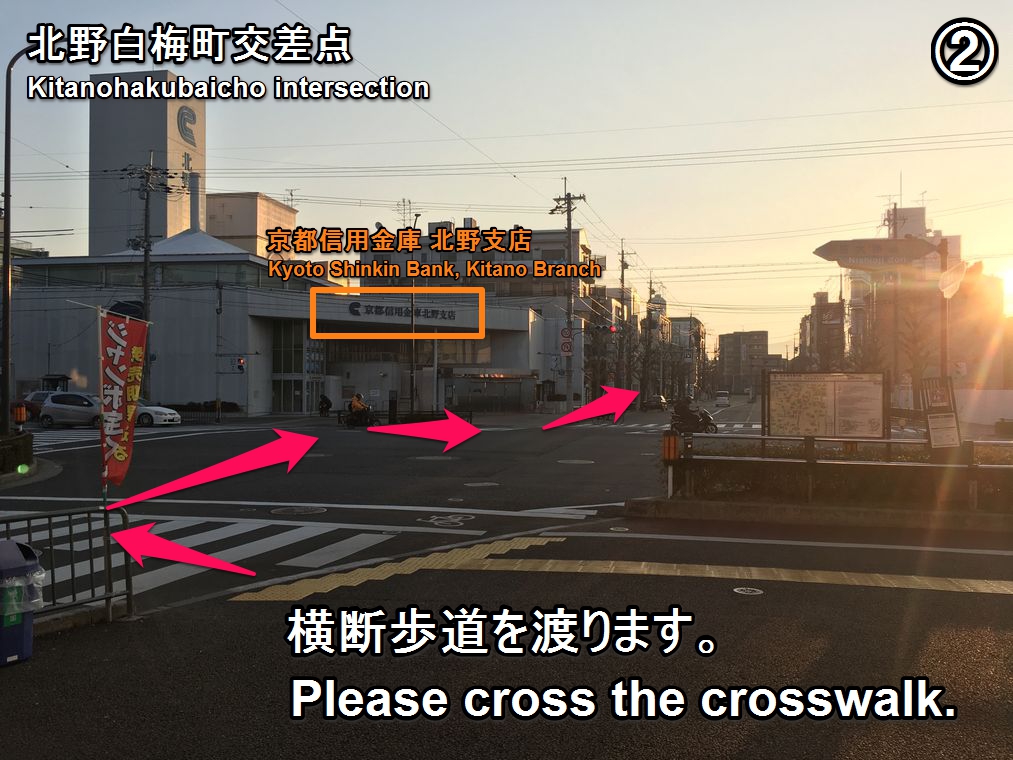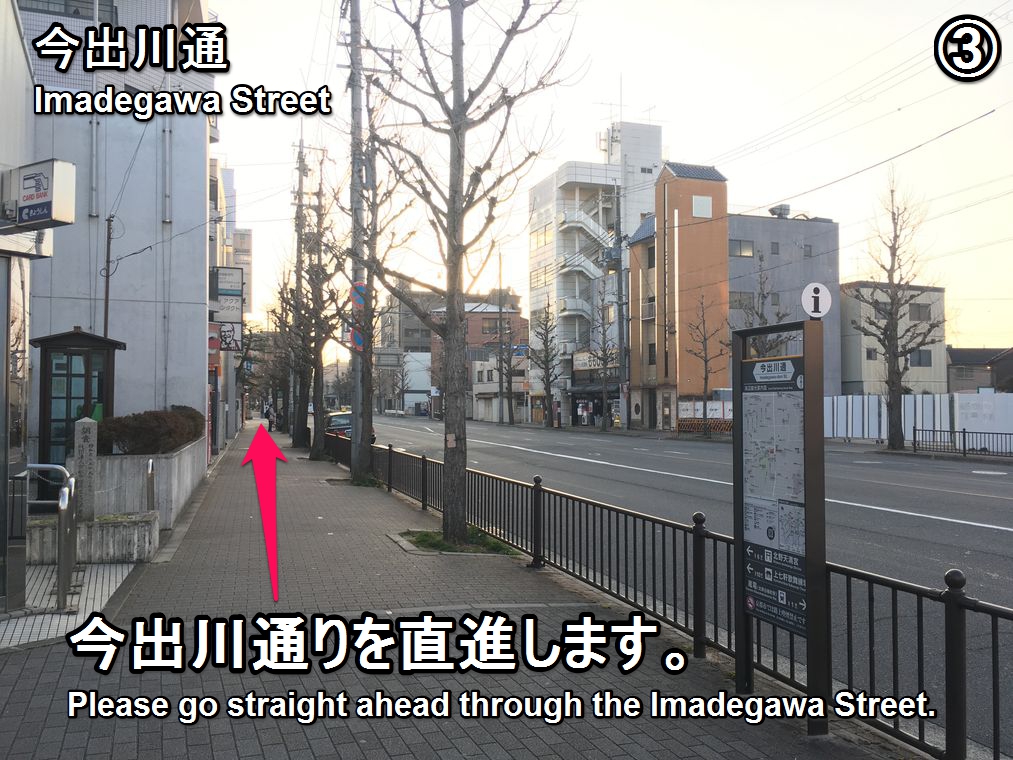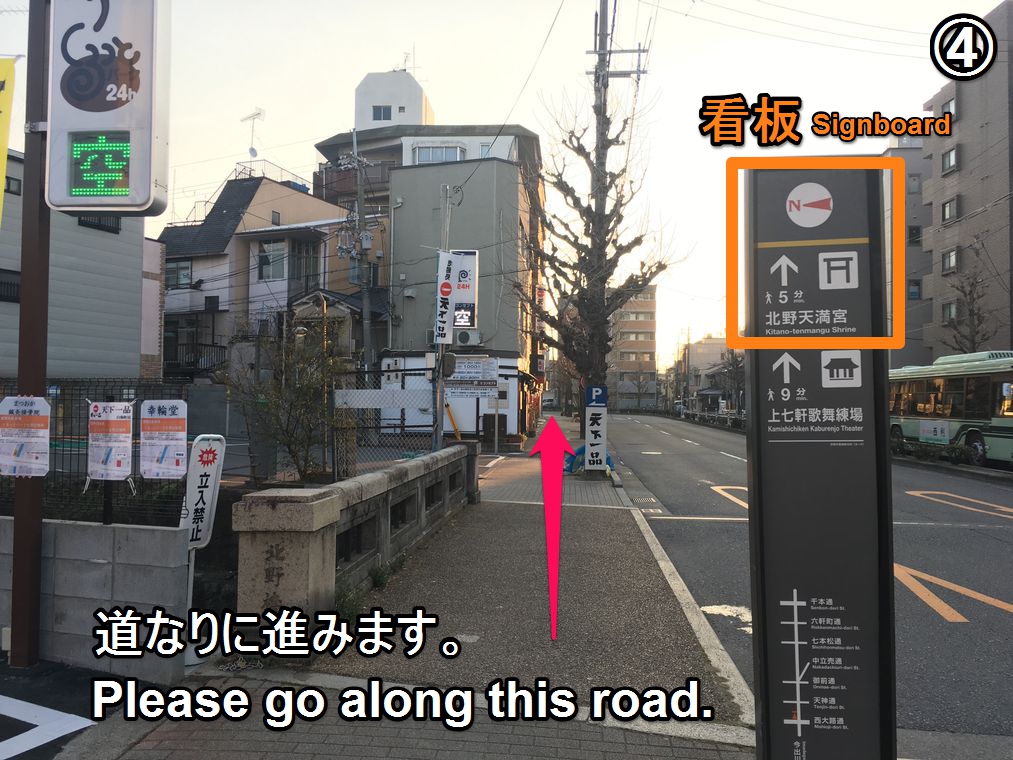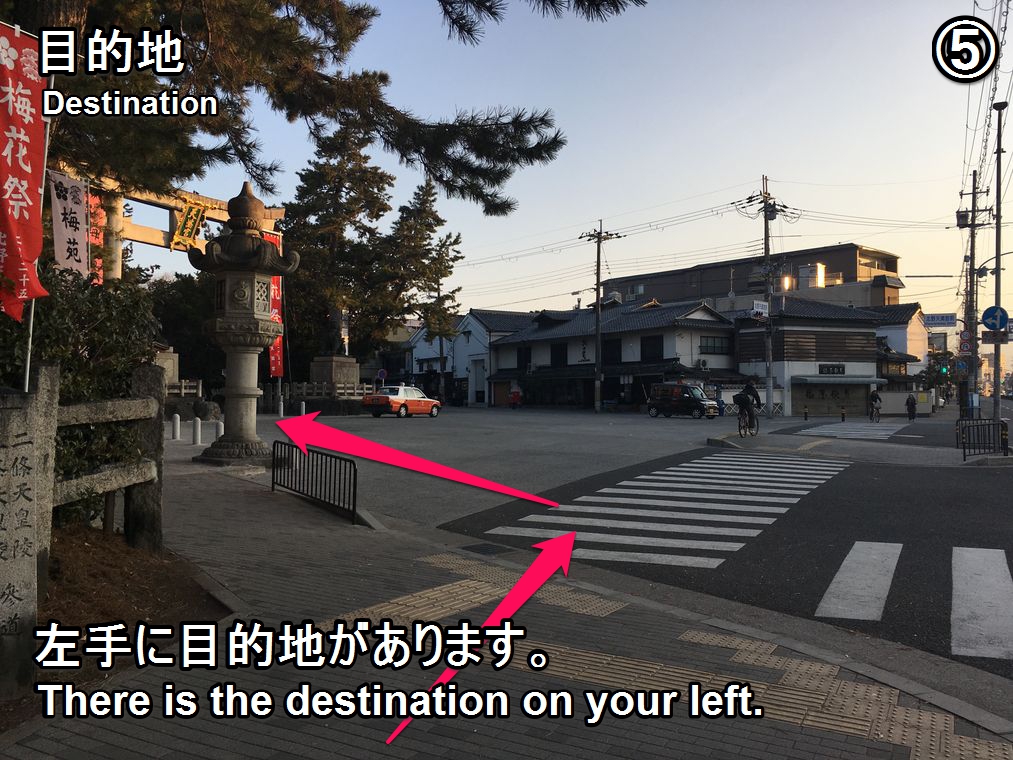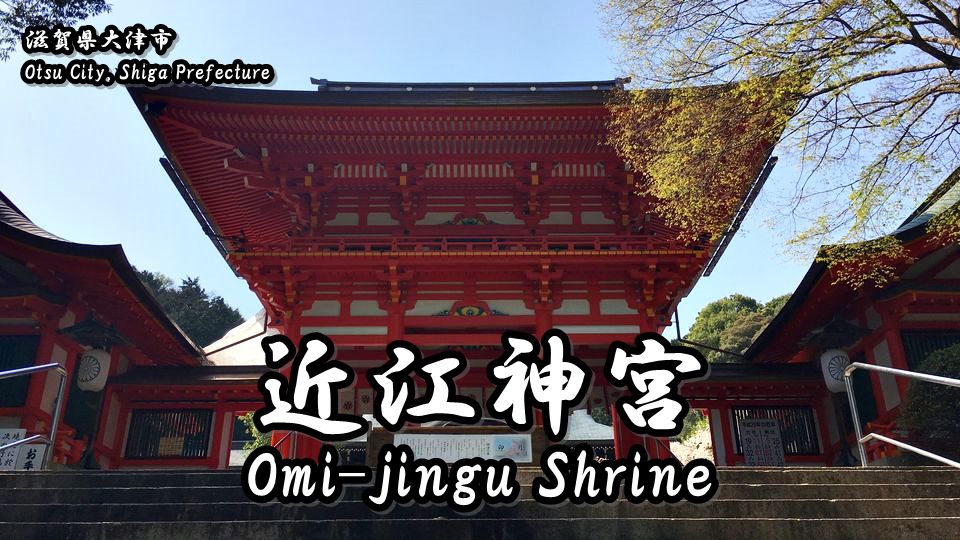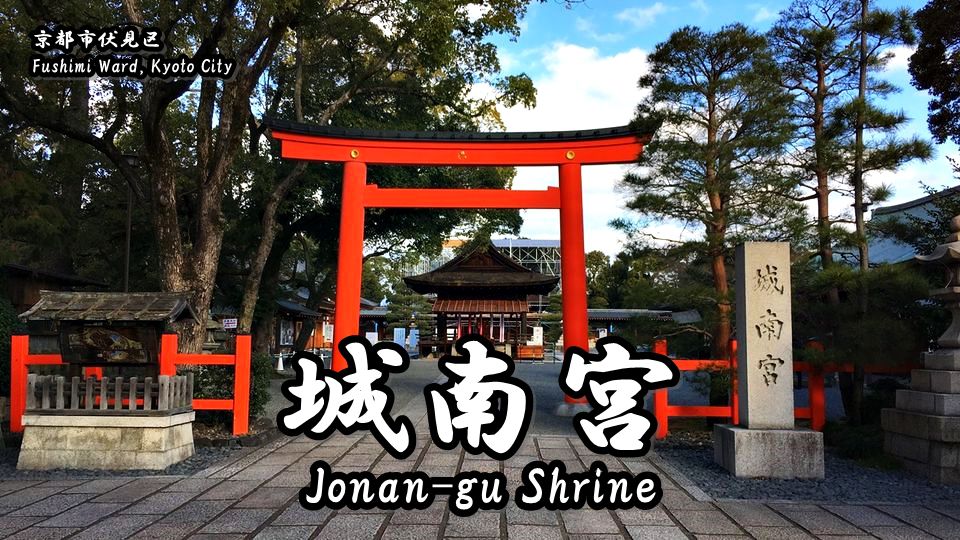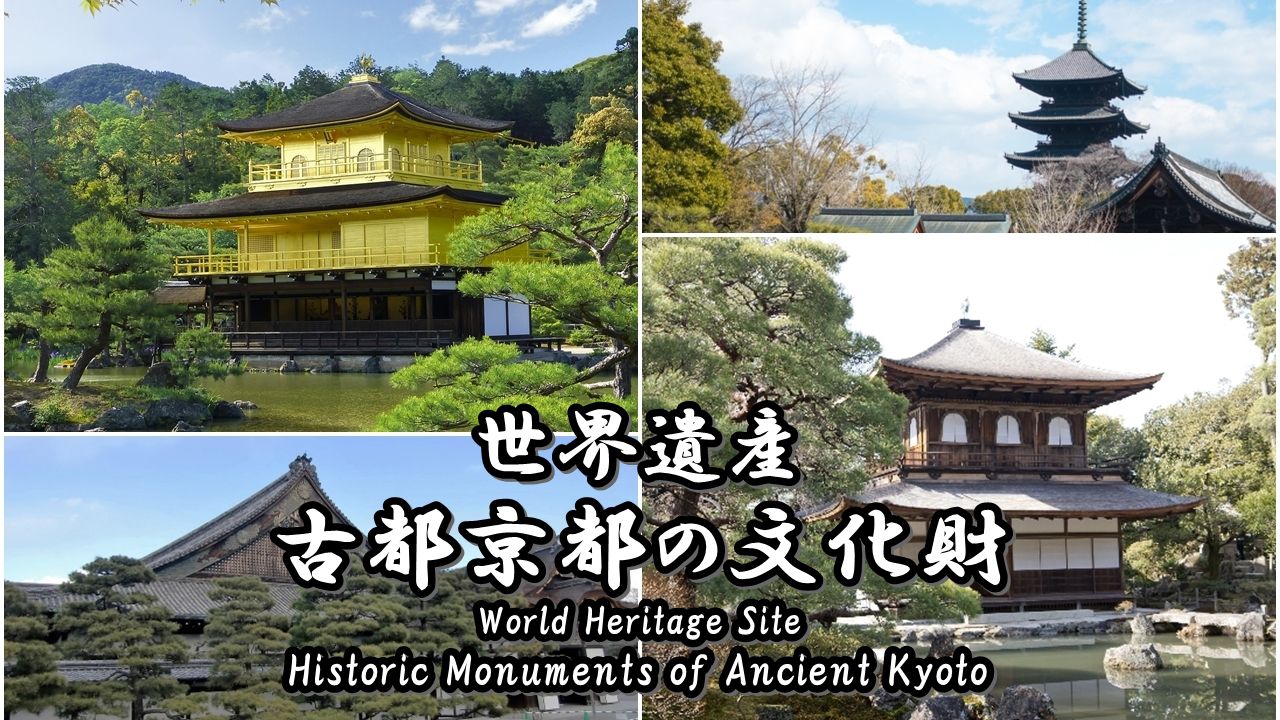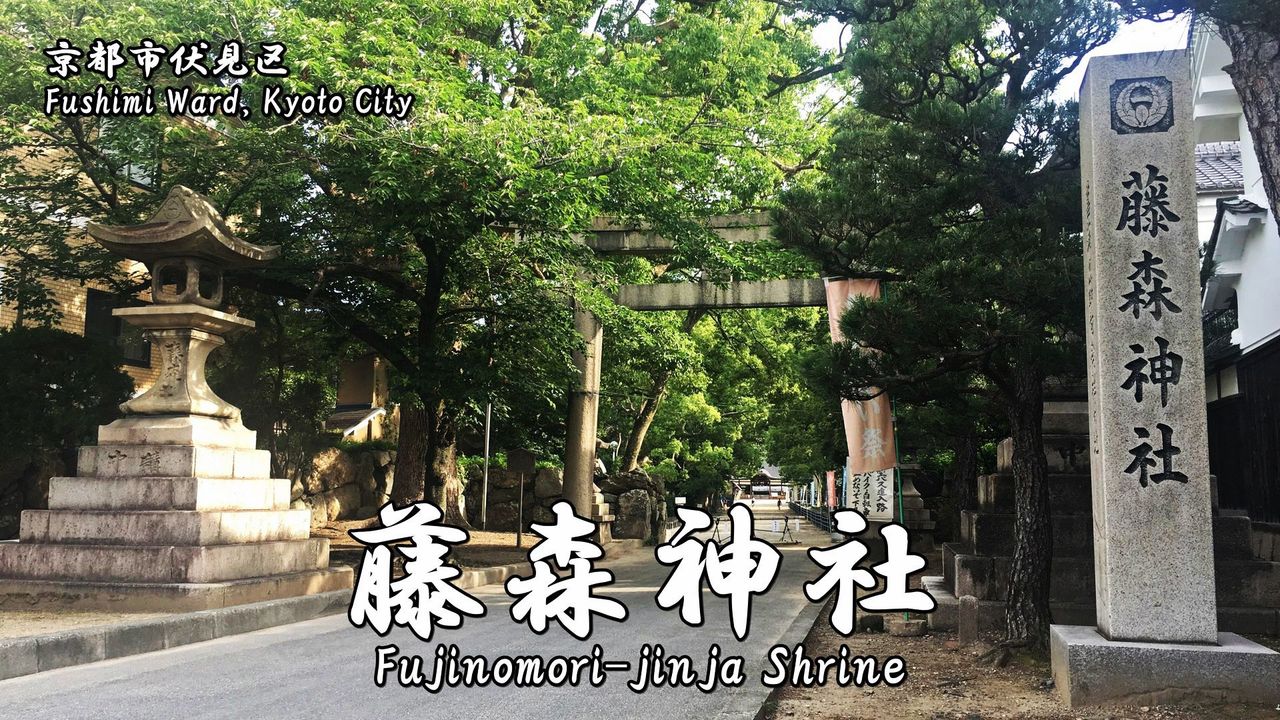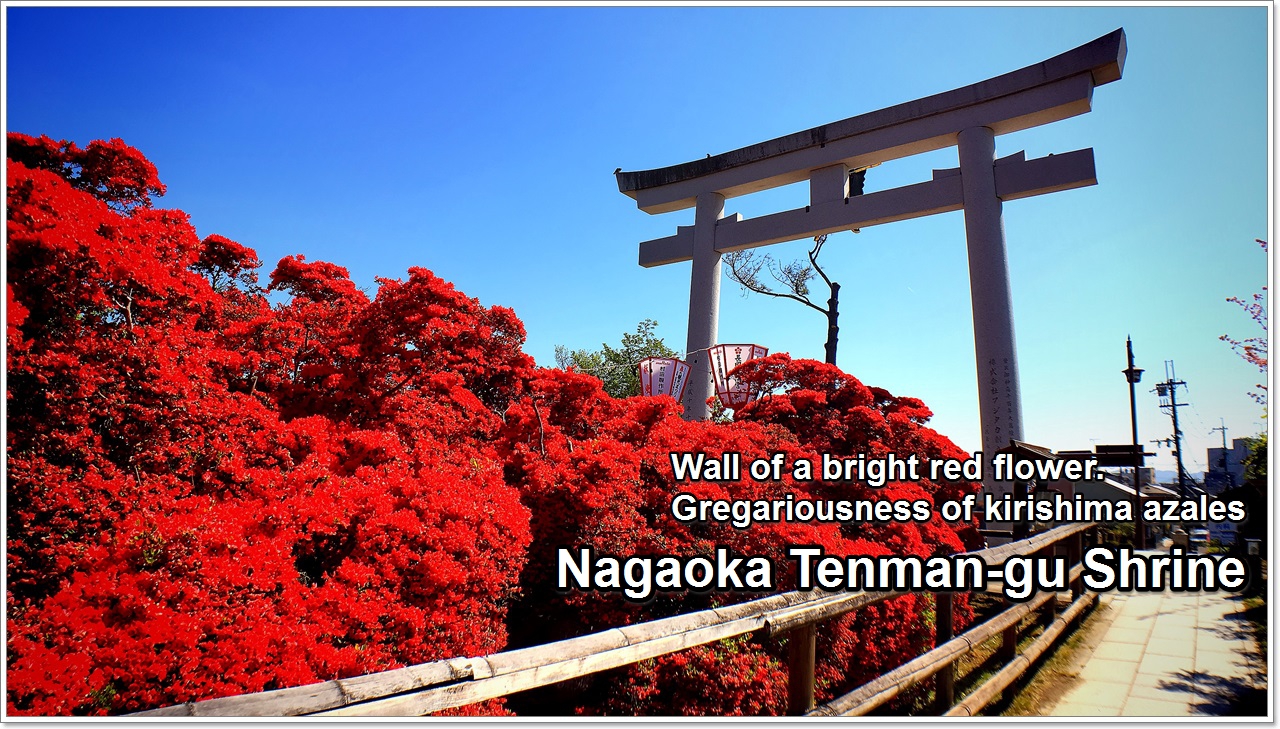Kitano Tenmangu Shrine (北野天満宮) is a Shinto shrine which was built in 947 of the Heian period in Kamigyo Ward, Kyoto City.
The main enshrined deity of Kitano Tenman-gu Shrine is SUGAWARA no Michizane (菅原道真), famous for the god of learning.
It is also known as Tenjin-san (天神さん) and Kitano-san (北野さん), is particularly famous for its beautiful ume flowers and autumn leaves.
History of Kitano Tenman-gu
Let’s study the history of this shrine with me.
I think that we can enjoy sightseeing of this shrine more by learning the history of it. XD
It is a Shinto shrine which was built in 947 of the Heian period.
In 987, the shingo ‘Kitano-tenmangu daijin (北野天満宮大神),’ was given, which is the title given to a Shinto shrine.
Kitano Tenmangu Shrine (Kyoto), Dazaifu Tenmangu Shrine (Fukuoka), and Osaka Tenmangu Shrine (Osaka) are referred to as the Three Great Tenjins of Japan.
In Japan, the shrine with the name of Tenmangu (天満宮) is a Shinto shrine worshiping SUGAWARA no Michizane (菅原道真) which is the God of learning.
SUGAWARA no Michizane have a deep relationship with ume and Ox.
Because Sugawara clan’s family crest is the plum blossom and SUGAWARA no Michizane was born in the Year of the Ox, Shrine precinct has many plum trees and images of the Ox.
In addition, the family crest of the shrine is a bowl with stars and Japanese plums.
On October 1, 1587, the Great Kitano Tea Gathering (北野大茶湯) was held in the precinct by Hideyoshi TOYOTOMI (豊臣秀吉).
During the Edo period, Tenjin was worshipped as the god of learning, due to the fact that Michizane was a great scholar and poet in real life.
SUGAWARA no Michizane is still a popular god, as the god of learning, especially for students.
Therefore many students visit this Shinto shrine in the school examination season.
Information for visitors
Website
Information
Address:Bakurocho, Kamigyo-ku Kyoto-shi, Kyoto, 602-8386, Japan
Phone:+81-75-461-0005
Foundation:947
Main enshrined deity:Sugawara no Michizane (菅原道真)
・Photography and video recording are prohibited inside buildings.
・The worship method of a Shinto shrine and a Buddhist temple, please refer to the following article.
Seven wonders of Kitano Tenman-gu
There are “the seven wonders” handed down in the Kitano Tenmangu from old days.
Please try to find it by all means!
- 影向松:Yogo no Matsu (the pine of advent)
- 筋違いの本殿:Illogical Hon-den Hall
- 星欠けの三光門:The gate without a star crest
- 大黒天の燈籠:Stone lantern of the Daikokuten (Mahakala)
- 唯一の立ち牛:The only standing cow
- 御后三柱(裏の社):Goko-no-Mihashira
- 天狗山:Mt. Tenguyama
影向松:Yogo no Matsu (the pine of advent)
The pine tree on the right side of the entrance to the shrine is called ‘Yogo no Matsu’.
It is said that SUGAWARA no Michizane will come down to this pine tree on the first snow day.
筋違いの本殿:Illogical Hon-den Hall
In most shrines, the Hon-den hall is at the end of the approach to the shrine.
However, in this shrine, Hon-den hall is at the end of a passage separate from the approach.
Because the other shrine (Jishu-jinja Shrine) had been already built in the place before this shrine was built.
星欠けの三光門:The gate without a star crest
Chu-mon gate of this shrine is called ‘Sanko-mon (三光門)’.
Sanko (三光) has the meaning of the crest of star, moon and sun.
However, this gate has the moon crest and sun crest, but there is no star crest.
So this gate is called ‘the gate without a star crest’.
大黒天の燈籠:Stone lantern of the Daikokuten (Mahakala)
In the precincts, there is only one stone lantern that Daikokuten (Mahakala) was carved.
Daikokuten (Mahakala) has divine favor of the money.
So, it is said that if you put pebbles on the mouth of Daikokuten, brings good fortune.
唯一の立ち牛:The only standing cow
The statues and sculptures of cow in the precincts have a sitting shape.
However, only the statue of the cattle of Hai-den hall has a standing shape.
It is a mystery why only this cow stands.
御后三柱(裏の社):Goko-no-Mihashira
In this shrine, there is a place called ‘Ura-no-yashiro’ in the backside of the main hall.
Three God called ‘Goko-no-Mihashira’ are enshrined.
天狗山:Mt. Tenguyama
In the northwest of the precincts there is a small mountain called Mt. Tenguyama.
It is said that long ago there was an imaginary monster called a crow-billed ‘Tengu’ in this small mountain.
Highlights of Kitano Tenman-gu
- 一の鳥居:Ichi no Torii
- 撫で牛:Nade-ushi (the rubbing cow)
- 楼門:Ro-mon Gate
- 三光門【重要文化財】:Sanko-mon Gate【Important cultural property】
- 社殿【国宝】:Sha-den Hall【National treasure】
- 回廊【重要文化財】:Corridor【Important cultural property】
- 東門【重要文化財】:East Gate【Important cultural property】
- 後門【重要文化財】:Ushiro-mon Gate【Important cultural property】
- 透塀【重要文化財】:Sukibei (transparent fences)【Important cultural property】
- 北門:North Gate
- 絵馬所:Emadokoro
- 神楽殿:Kagura-den hall
- 宝物殿*:Treasure hall*
- 梅香水 (手水舎):Chozusha
- 御土居【史跡】*:Odoi【Historic site】*
- 御土居の大欅「東風」*:Large zelkova ‘Kochi’*
- 梅苑/もみじ苑*:Plum/Maple garden*
- 茶室 梅交軒*:Baiko-ken (Tea house)*
- 茶室 松向軒:Shoko-ken (Tea house)
- 太閤井戸:Taiko well
This mark ‘*‘ is a pay area.
一の鳥居:Ichi no Torii
It was built in 1921.
撫で牛:Nade-ushi (the rubbing cow)
The shrine has a cow statue called ‘Nade-ushi’ (the rubbing cow), which is believed to help people recover from their diseases when they rub it on the same part as the sick part of their bodies.
楼門:Ro-mon Gate
Two-storied gate made in the Momoyama style.
三光門【重要文化財】:Sanko-mon Gate【Important cultural property】
It was built in 1607 of the early Edo period using funds donated by Hideyori TOYOTOMI (豊臣秀頼).
社殿【国宝】:Sha-den Hall【National treasure】
It was also built in 1607 of the early Edo period using funds donated by Hideyori TOYOTOMI (豊臣秀頼).
One characteristic of this style is that the honden (main hall) and haiden, usually twoseparate buildings, are integrated, and connected by a low building called “ishinoma.”
回廊【重要文化財】:Corridor【Important cultural property】
It was also built in 1607 of the early Edo period using funds donated by Hideyori TOYOTOMI (豊臣秀頼).
It has the role of a fence to protect the Sha-den.
東門【重要文化財】:East Gate【Important cultural property】
It was also built in 1607 of the early Edo period using funds donated by Hideyori TOYOTOMI (豊臣秀頼).
Four-pillar gate, Kiritsuma-zukuri (gable roof style)
後門【重要文化財】:Ushiro-mon Gate【Important cultural property】
It was also built in 1607 of the early Edo period using funds donated by Hideyori TOYOTOMI (豊臣秀頼).
Hiwadabuki (cypress bark roof), Hirakara-mon (flat gate with Chinese-style gables on both sides)
透塀【重要文化財】:Sukibei (transparent fences)【Important cultural property】
It was also rebuilt in 1607 of the early Edo period using funds donated by Hideyori TOYOTOMI (豊臣秀頼).
Hiwadabuki (cypress bark roof), Richly colored transom window, Vermilion-lacquered lattice-window
北門:North Gate
Four-pillar gate.
絵馬所:Emadokoro
It was built in 1699 of the early Edo period.
It was designated as a designated tangible cultural property.
神楽殿:Kagura-den hall
Kaguramai (Japanese mythical dance and music performed for the gods) is dedicated here every month on 25th.
宝物殿*:Treasure hall*
Treasures of the shrine is possessed in this building.
梅香水 (手水舎):Chozusha
Chozusha (building for cleaning hands and rinsing mouth).
御土居【史跡】*:Odoi【Historic site】*
Odoi is a mound built in 1591 by Hideyoshi TYOTOMI (豊臣秀吉) surrounding Kyoto.
It encircles a rectangular area that measures about 8.5 km from north to south and about 3.5 km from east to west.
It is only open to the public on specific days.
御土居の大欅「東風」*:Large zelkova ‘Kochi’*
Large zelkova of 600 years old called ‘Kochi (東風)’.
梅苑/もみじ苑*:Plum/Maple garden*
The plum garden of the precincts is open from the end of February to the end of March every year.
And the maple garden of the precincts is open from the end of October to the early December every year.
茶室 梅交軒*:Baiko-ken (Tea house)*
茶室 松向軒:Shoko-ken (Tea house)
太閤井戸:Taiko well
Sub-shrines of Kitano Tenman-gu
There are many sub-shrines in the precincts.
- 伴氏社:Tomouji-sha Shrine
- 火之御子社:Hinomiko-sha Shrine
- 白太夫社:Shiradayu-sha Shrine
- 老松社:Oimatsu-sha Shrine
- 福部社:Fukube-sha Shrine
- 地主神社:Jishu-jinja Shrine
- 文子天満宮:Ayako-tenmangu Shrine
- 竈社:Kamado-sha Shrine
- 野見宿祢神社:Nominosukune-jinja Shrine
- 豊国神社:Toyokuni-jinja Shrine
- 一夜松社:Ichiyamatsu-sha Shrine
- 一之保神社:Ichinoho-jinja Shrine
- 奇御霊神社:Kushimitama-jinja Shrine
- 稲荷神社:Inari-jinja Shrine
- 猿田彦社:Sarutahiko-sha Shrine
- 宗像社:Munakata-sha Shrine
- 大杉社:Osugi-sha Shrine
伴氏社:Tomouji-sha Shrine
Enshrined deity:Mother of SUGAWARA no Michizane
Divine favor:Growth of the child, Academic achievement
火之御子社:Hinomiko-sha Shrine
Enshrined deity:Honoikazuchi no Kami (the god of fire-causing thunder)
Divine favor:Protection against thunder, Gokokuhojo (bumper crop)
白太夫社:Shiradayu-sha Shrine
Enshrined deity:Haruhiko WATARAI
Divine favor:The pregnancy
老松社:Oimatsu-sha Shrine
Enshrined deity:SHIMADA no Tadaomi
Divine favor:Forest industry
福部社:Fukube-sha Shrine
Enshrined deity:Nofuku SOGAWA
Divine favor:Good‐luck
地主神社:Jishu-jinja Shrine
Enshrined deity:Tenjin-chigi (the gods of heaven and earth)
Divine favor:Good‐luck, Road safety, Achievement of various wishes
文子天満宮:Ayako-tenmangu Shrine
Enshrined deity:Sugawara no Michizane
Divine favor:Academic achievement
竈社:Kamado-sha Shrine
Enshrined deity:Niwatsuhiko no kami etc.
Divine favor:Protection against kitchen fire
野見宿祢神社:Nominosukune-jinja Shrine
豊国神社:Toyokuni-jinja Shrine
一夜松社:Ichiyamatsu-sha Shrine
Enshrined deity:NOMI no Sukune/Hideyoshi TOYOTOMI/The soul of pine-trees
Divine favor:Martial arts achievement/Success in life/Longevity
一之保神社:Ichinoho-jinja Shrine
奇御霊神社:Kushimitama-jinja Shrine
Enshrined deity:Sugawara no Michizane
Divine favor:Academic achievement/literature achievement
稲荷神社:Inari-jinja Shrine
Enshrined deity:Uganomitama no Mikoto etc.
Divine favor:Gokokuhojo (bumper crop)/Business prosperity/Protection against fire
猿田彦社:Sarutahiko-sha Shrine
Enshrined deity:Sarutahiko-no-kami/Omiyame no kami
Divine favor:Performing arts achievement
宗像社:Munakata-sha Shrine
Enshrined deity: Munakata Sanjojin
Divine favor:Road safety/Marine safety
大杉社:Osugi-sha Shrine
Enshrined deity:Sacred tree
Divine favor:Longevity
Video of Kitano Tenman-gu
Photo of Kitano Tenman-gu
Goshuin (red Ink Stamp) of Kitano Tenman-gu
How to get to Kitano Tenmangu
Nearest station is Randen Kitano-Line Kitano-Hakubaicho Sta.
We can also go by bus from JR Kyoto Station.
From Osaka Sta. to Kitano Hakubaicho Sta. (by train)
Timetable and Route Search (train)
1.Get on the JR Kyoto Line from Osaka Station to Kyoto Station and change to the JR Sagano Line.
2.Get on the JR Sagano Line from Kyoto Station to Uzumasa Station.
3.Change to the Randen Kitano Line at Uzumasa (Satsueisho-mae) Station.
4.Get on the Randen Kitano Line from Satsueisho-mae Station to Kitano Hakubaicho Station.
From Namba Sta. to Kitano Hakubaicho Sta. (by train)
Timetable and Route Search (train)
1.Get on the Osaka Metro Midosuji Line from Namba Station to Umeda Station and change to the JR Kyoto Line.
2.Get on the JR Kyoto Line from Osaka Station to Kyoto Station and change to the JR Sagano Line.
3.Get on the JR Sagano Line from Kyoto Station to Uzumasa Station.
4.Change to the Randen Kitano Line at Uzumasa (Satsueisho-mae) Station.
5.Get on the Randen Kitano Line from Satsueisho-mae Station to Kitano Hakubaicho Station.
From Kyoto Sta. to Kitano Hakubaicho Sta. (by train)
Timetable and Route Search (train)
1.Get on the JR Sagano Line from Kyoto Station to Uzumasa Station.
2.Change to the Randen Kitano Line at Uzumasa (Satsueisho-mae) Station.
3.Get on the Randen Kitano Line from Satsueisho-mae Station to Kitano Hakubaicho Station.
From Kitano Hakubaicho Sta. (on foot)
It’s about 10 minutes (400 m) on foot.
Get on a bus from Kyoto Station
Timetable and Route Search (bus)
①Please get on a Kyoto City Bus No.50 or 101 (bus stop B2) and get off at Kitano Tenmangu-mae (Kitano-tenmangu Shrine).
Bus company:Kyoto City Bus
Routes/Destination:[Route No. 50, Bound for Ritsumeikan Univ.][Route No. 101, Bound for Kinkakuji Temple Via Nijo-jo Castle]
Boarding bus stop:Kyoto Sta. [B2]
Alighting bus stop:Kitano Tenmangu-mae (Kitano-tenmangu Shrine)
Bus fare:230 yen
Time required:About 30 min
[Timetable] Route No. 50, Bound for Ritsumeikan Univ.
[Timetable] Route No. 101, Bound for Kinkakuji Temple Via Nijo-jo Castle
Take a taxi
From Kyoto Station:About 2,700 yen (30 minutes)
From Gion-Shijo Station:About 2,300 yen (20 minutes)
・Let’s show a taxi driver the following phrase.
・If you want to call a taxi, let’s show the following phrase.
[Phone number of taxi dispatch : Around the Kyoto Station]*Japanese text only.
Hotel search & reservation
How did you like it?
Have a nice trip! XD

